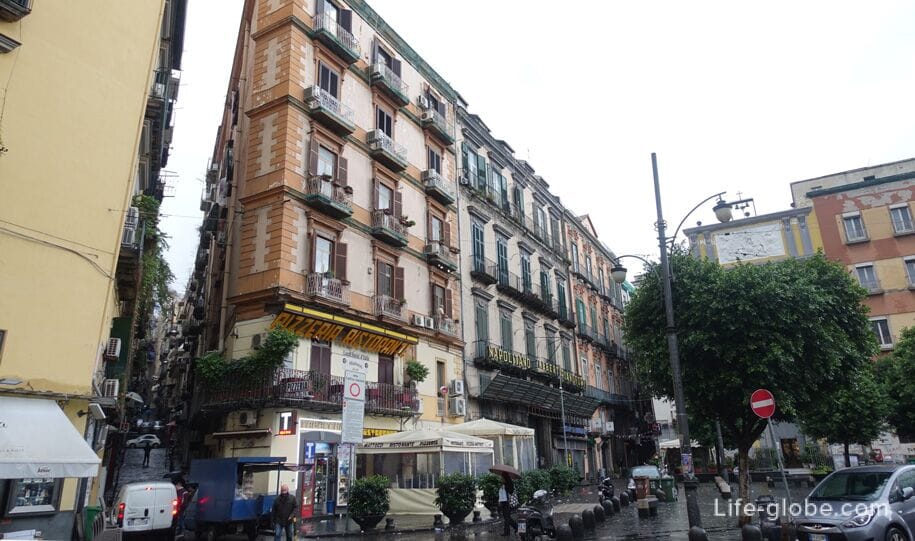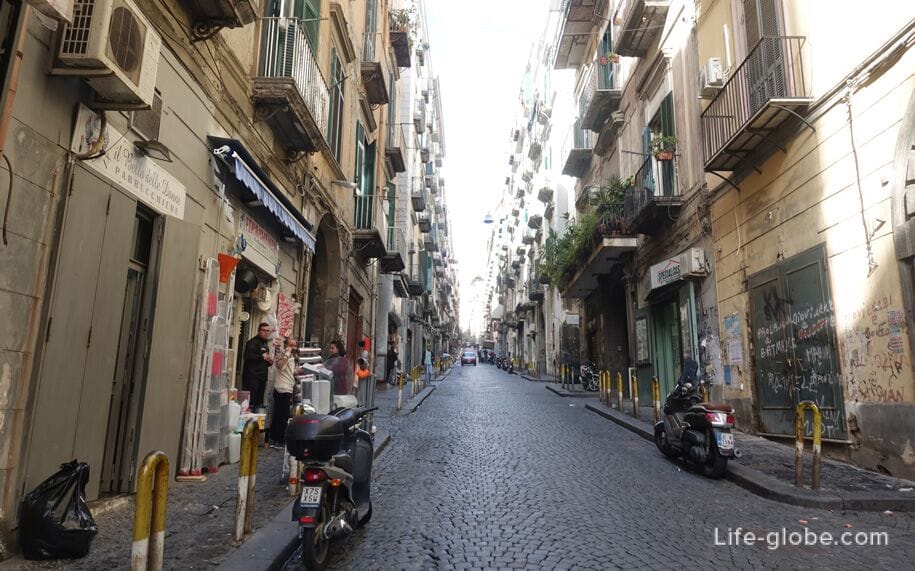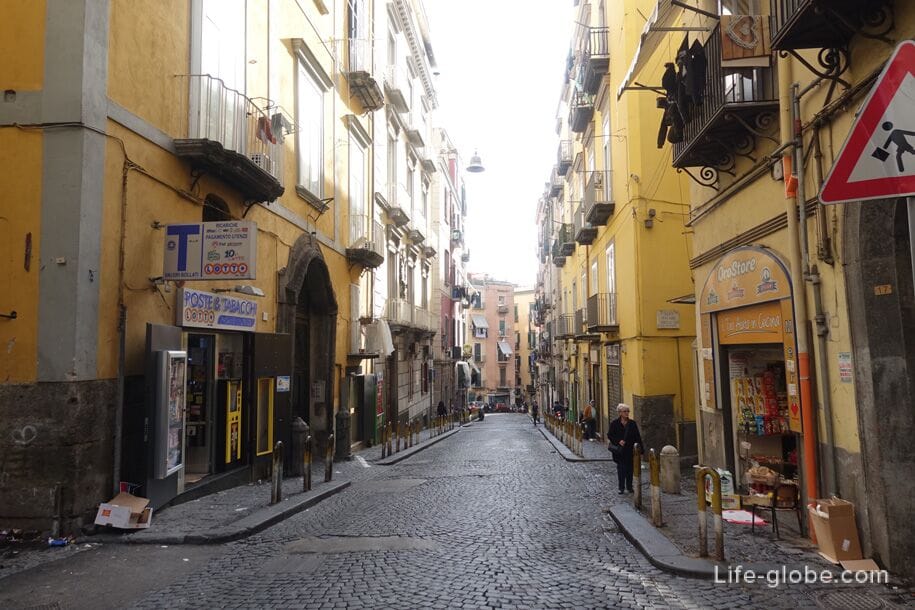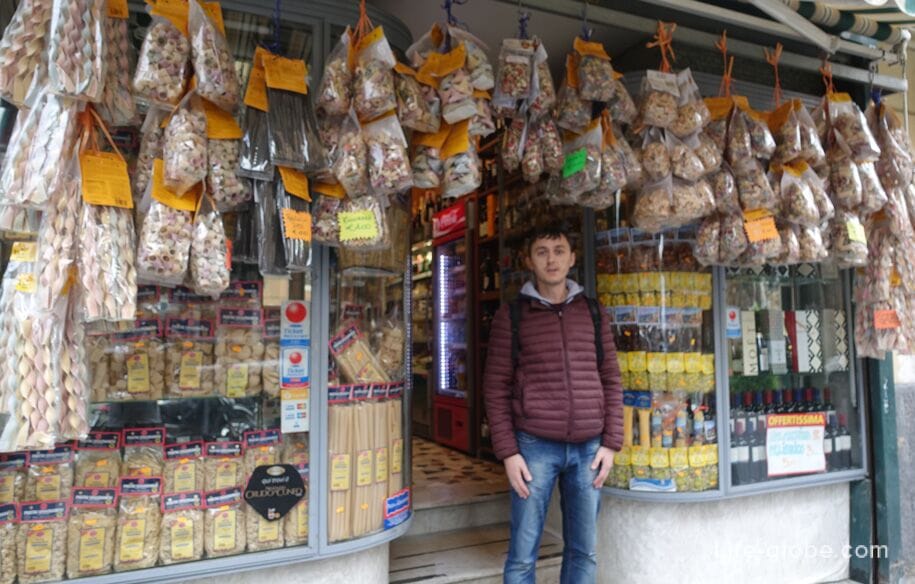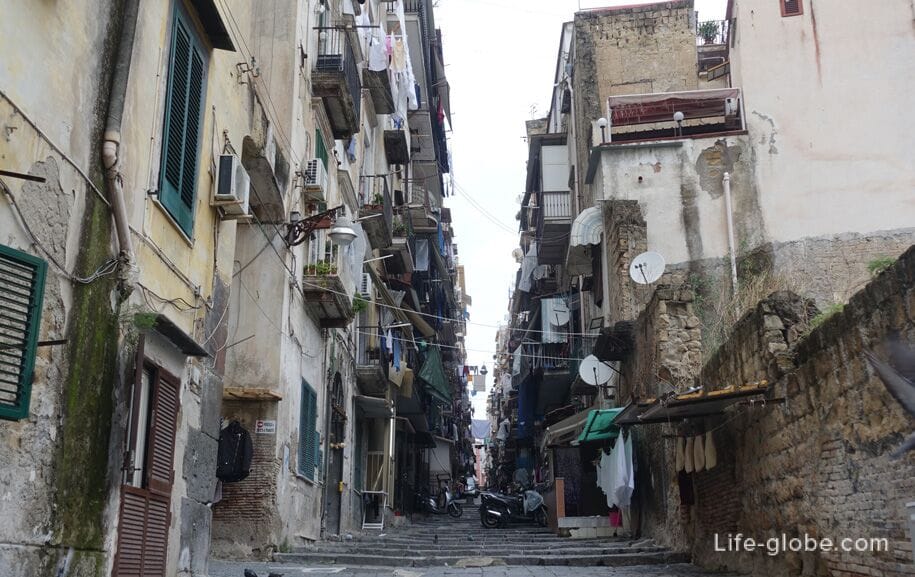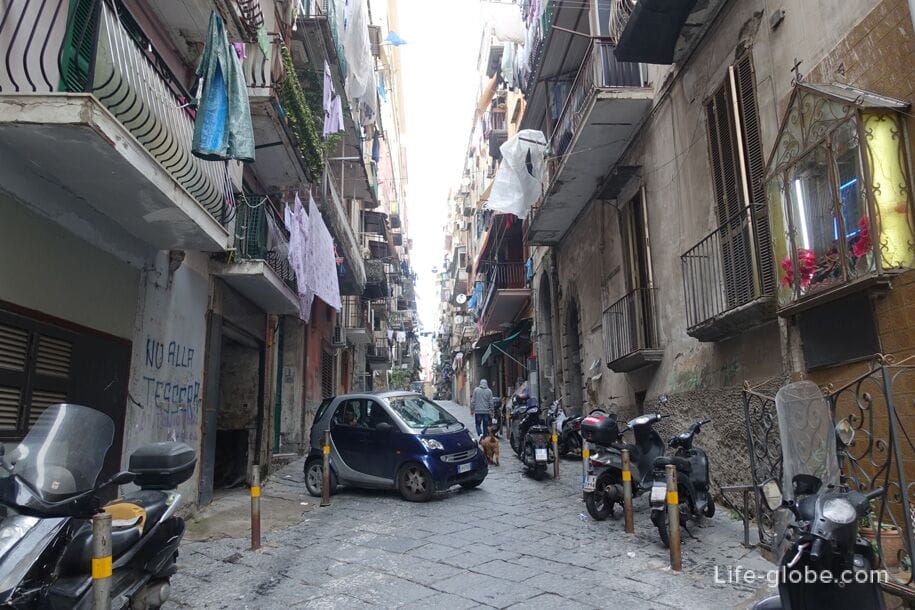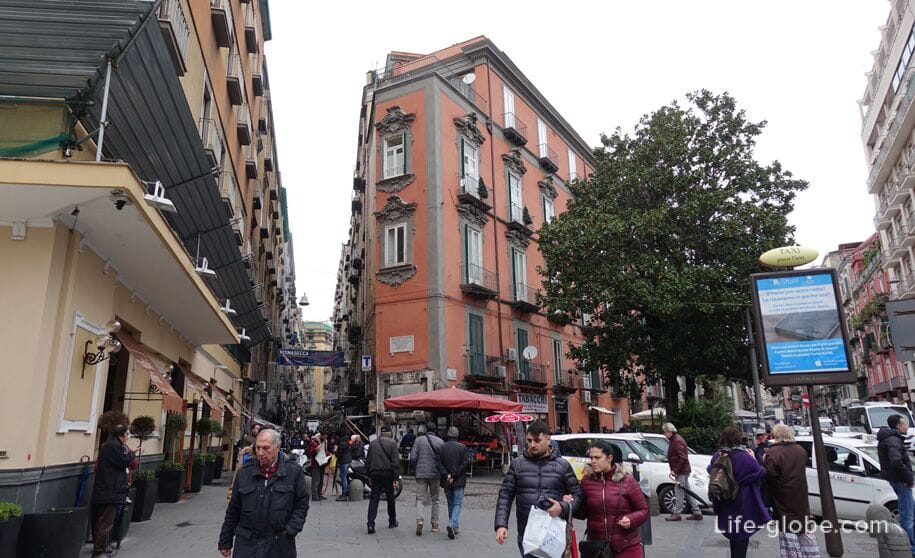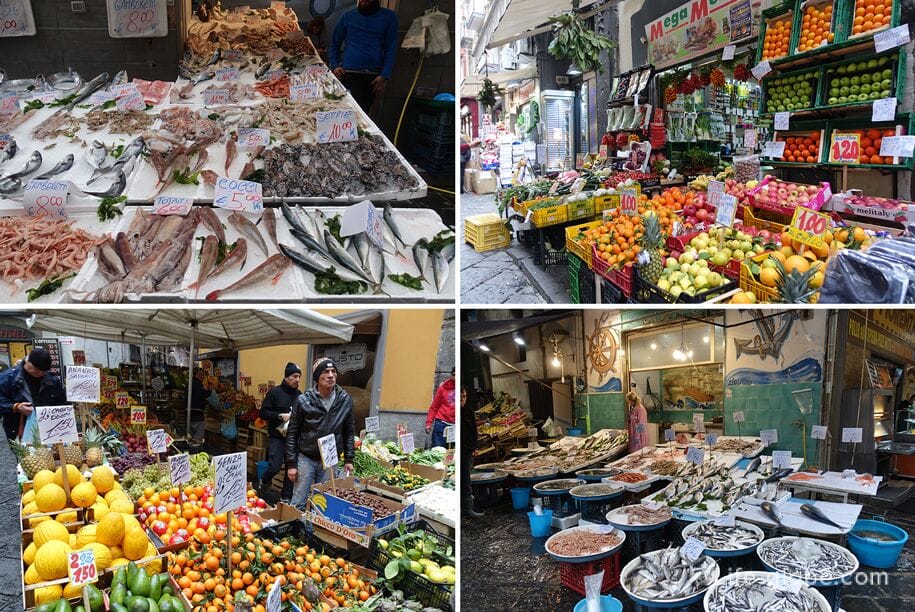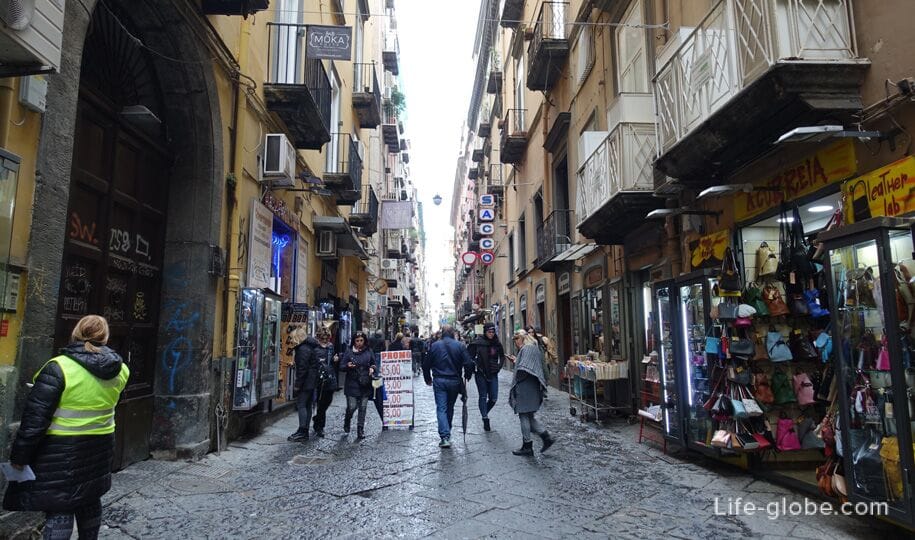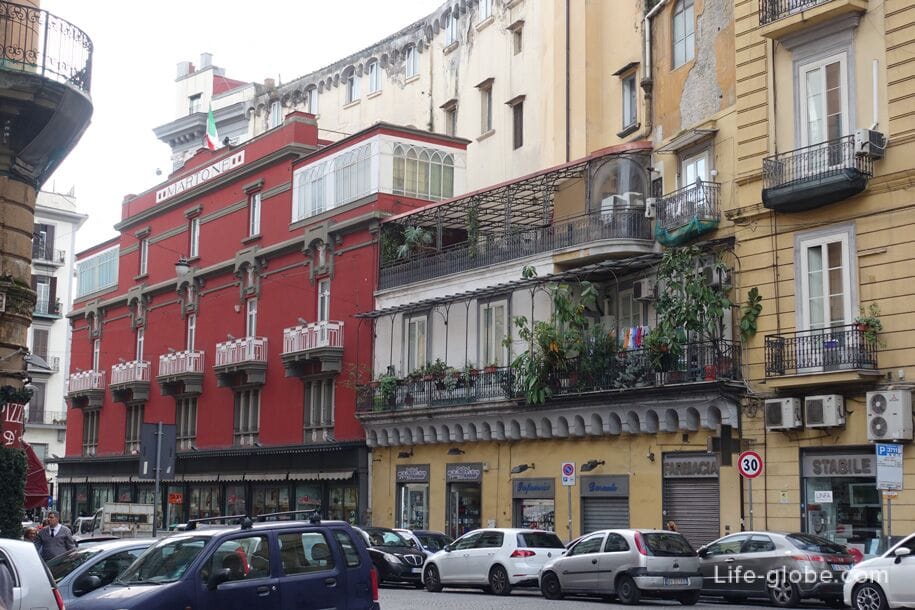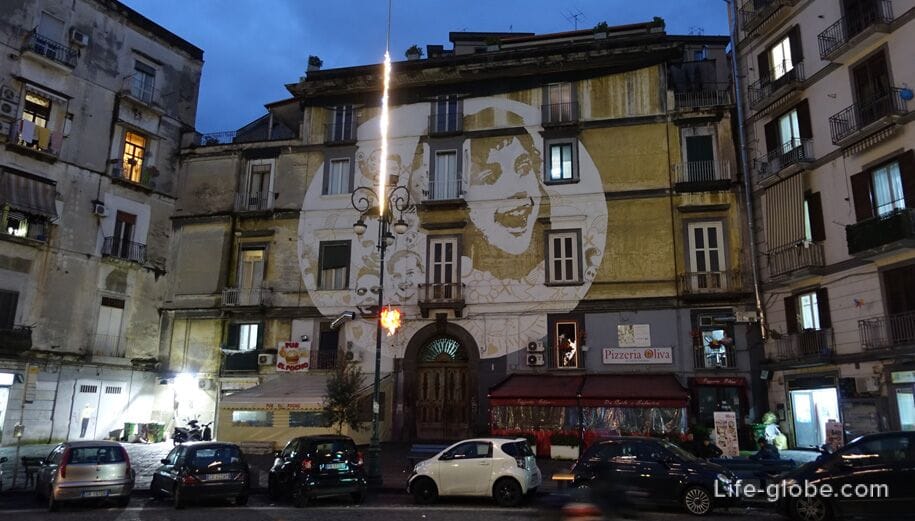
Naples (Napoli) is the third largest city in Italy after Rome and Milan, the capital of the Campania region, located in the Bay of the Gulf of Naples at the foot of Vesuvius.
The patron Saint of Naples is San Gennaro, whose memory day is celebrated on 19 September as a celebration of the city. On this day, the Cathedral of Naples is the main place of worship where thousands of people are flocking to witness the annual event "the miracle of the blood" - when, as they say, the dried blood of Januarius becomes liquid at the time when the vessel with the blood trays to the Holy relics belonging to the body of the patron.
Originally settled by the Greeks before Christ, then bearing the name of Partenope, now Naples, is one of the oldest continuously inhabited urban area in the world.
Throughout its history, the city was an important part of Magna Graecia, playing a significant role in the merger of Greek and Roman societies and major cultural center under the Romans. It served as the capital of the Duchy of Naples (661-1139), then the Kingdom of Naples (1282-1816) and finally, Two of Sicily until the unification of Italy in 1861.

Due to its rich history and continuous development, the current Naples so diverse that it could produce a completely different impression, sometimes even cause contradictory feelings.
It is the city where side by side are old and new, where a dirty narrow street with dilapidated buildings can interfere with the neat historical buildings and monumental churches, where part of the old town, hidden under ground, traces the history of the region and a variety of attractions, definitely can not fail to impress.
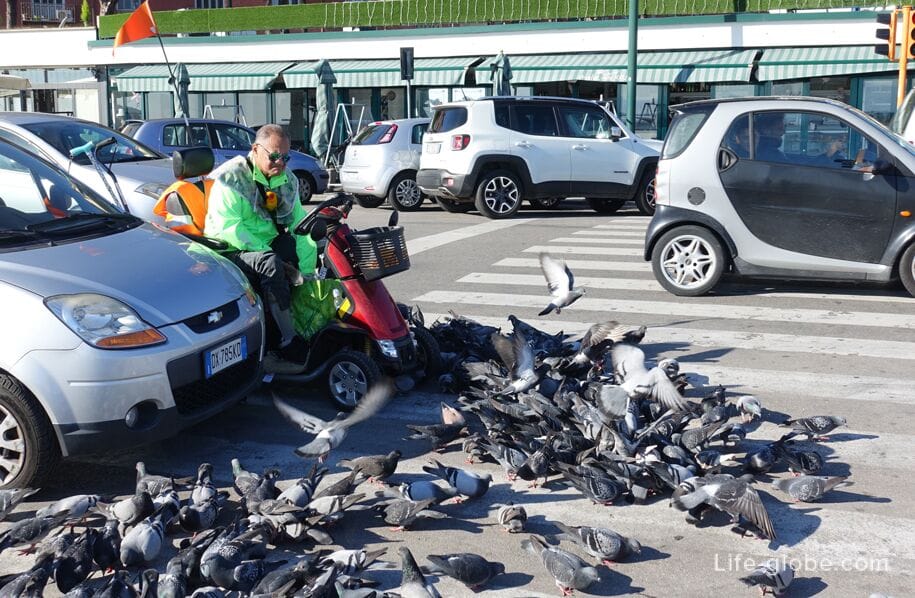
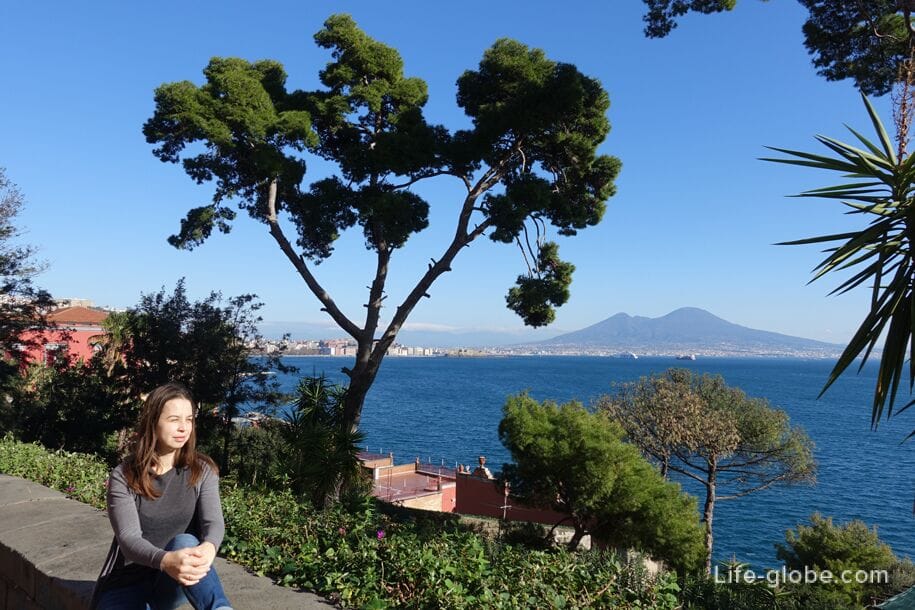
The historic centre of Naples is the largest in Europe and listed as a UNESCO world heritage site.
Near the historical centre there are many objects of cultural and historical significance, including the stunning Palace of Caserta and the Roman ruins of Pompeii and Herculaneum, as well as natural beauty such as the hill of Posillipo, Viglasky field, a tiny island Nisida and Vesuvius national Park.

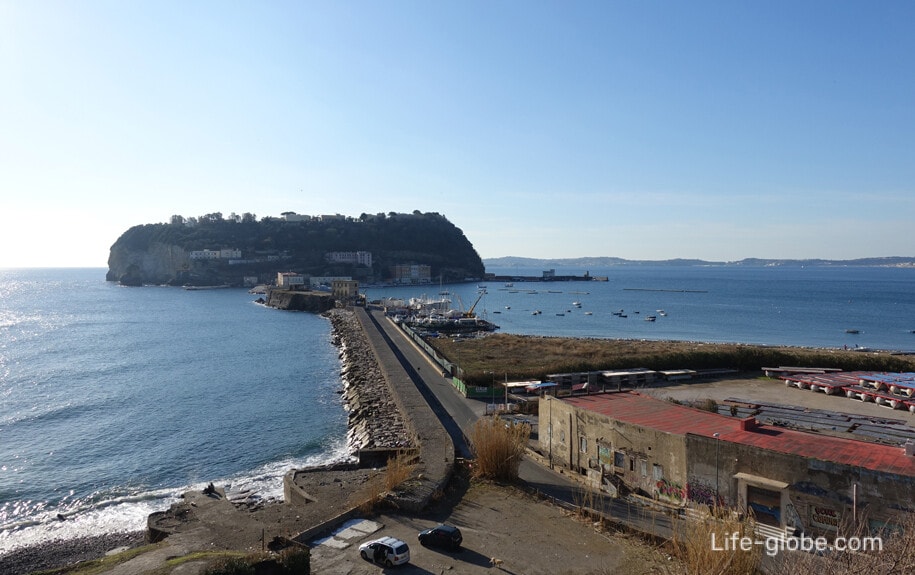
Naples is a city located on the hills, of which the four most known: Posillipo, Vomero, Capodimonte and Pizzofalcone.
Due to the hilly terrain within the city there are many lookouts and points from which to enjoy the beautiful panoramic views of the Gulf of Naples, Vesuvius, Naples and some surrounding area. In good weather, with some of the points you can see the Islands of Capri, Ischia and the Sorrentine coast.
Of the best viewing areas can be allocated:
- open areas of the castle Sant ' Elmo;
lookout San Martino, located at the foot of the castle of Sant ' Elmo;
the terrace of the Villa Floridiana;
viewpoint of the Park of Capodimonte;
- lookout terrace of the Camaldoli;
- the observation deck of Belvedere Sant'antonio Posillipo;
- review of point Park virdzhiliano. Read more about observation deck in Naples...
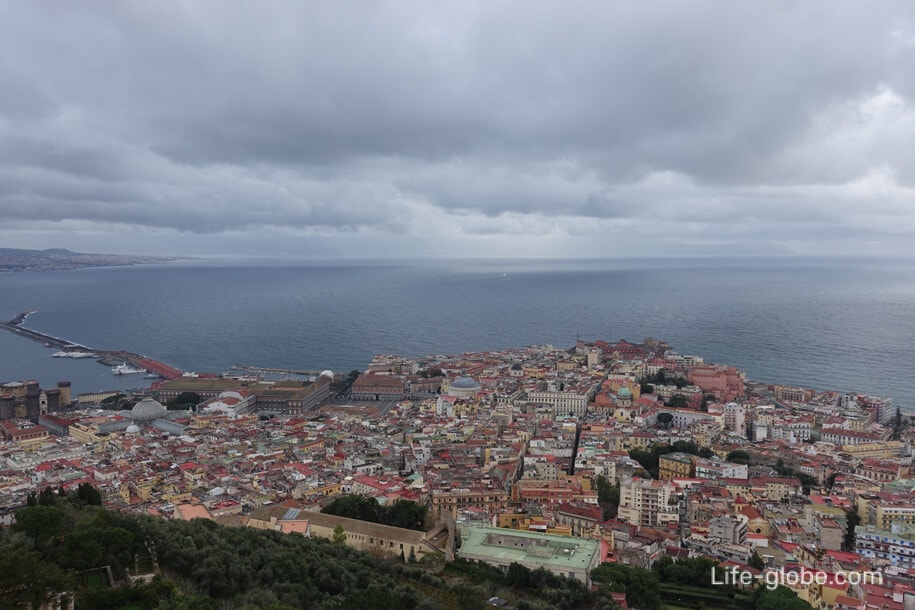

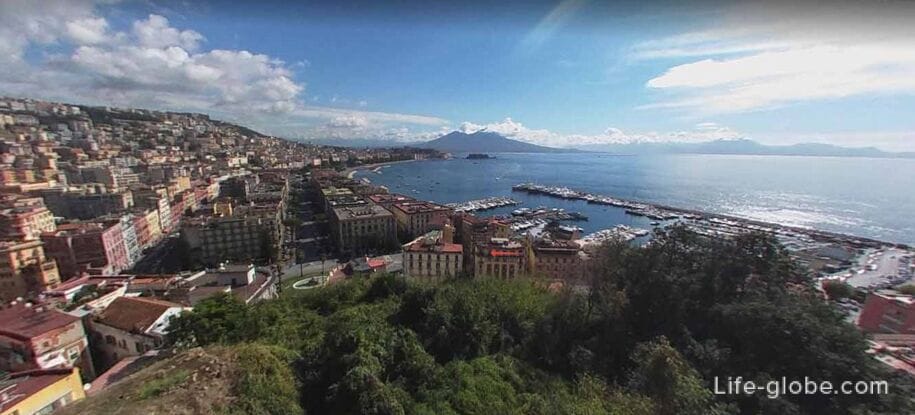
Because Naples is located in marine waters, it is not costing the city and without the coastal zone. Beach vacation in Naples is not his strong point. The beaches here are mediocre, with dark sand and pebbles, narrow and unextended. However, if you visit Naples in the high season, the opportunity to combine sightseeing with sunbathing and sea bathing is still there.
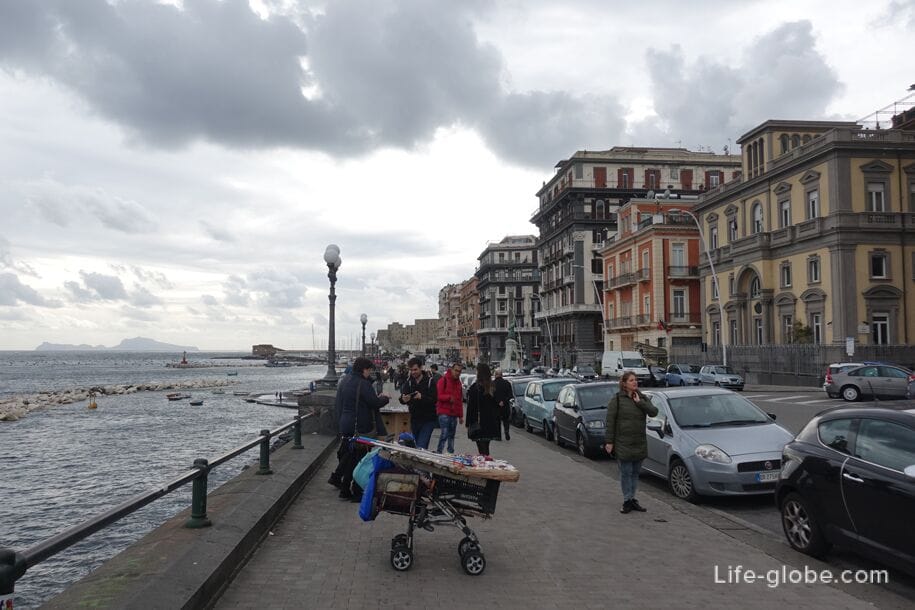
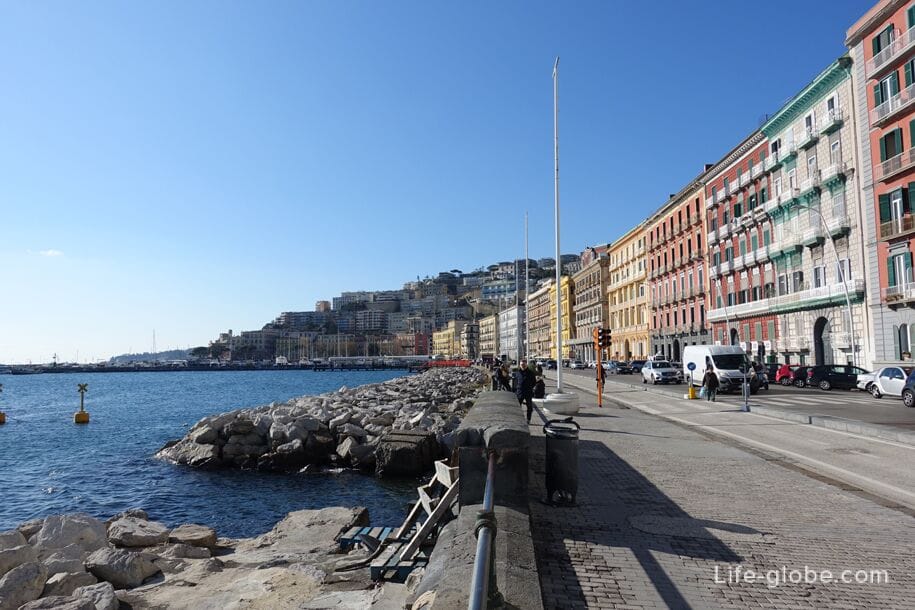
Beach vacation is better to travel outside of the city. But the quays of Naples, originating from the small Marina, near Piazza Plebiscito and Park Malocello (Molosiglio Gardens) and stretches almost to the Western side of Naples are an excellent place for walks and rest.
On the quays of the city centre attractions, such as:
- the Giant fountain (Fountain of the Giant) - treharne delicate structure, decorated with sculptures, designed in the 17th century for the Royal Palace of Naples;

- the medieval castle, Castel Dell'ovo and the Marina near the castle;
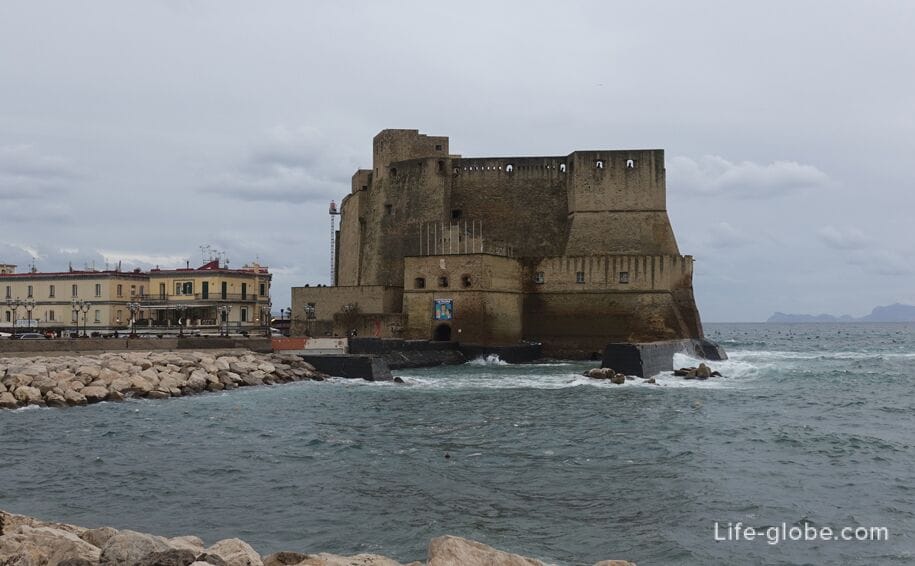

- city Park, Riviera di Chiaia;

- the picturesque harbour of the city of Mergellina and Sant Nazzaro (Nazzaro and Saint Mergellina Harbour), lined with taverns and restaurants, and the road along the Harbor is called the promenade of Mergellina;

- Sebeto fountain (Fontana del Sebeto) is one of the monumental fountains of Naples.
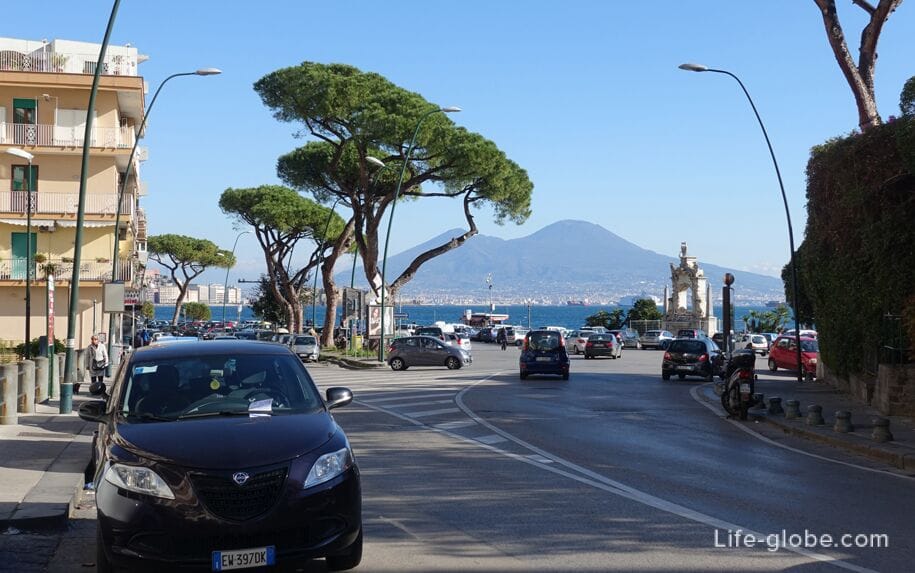
Palace of Donna Anna (Palazzo donn'anna) - a historical monument of the 17th century;

Within the hill of Posillipo such as embankments almost there, but with some stunning views. In addition, the hill of Posillipo is one of the cleanest and greenest places in modern Naples. Read more about the coast and the beaches of Naples...

Naples is, for the most part, the historic center, it was there that prefer to stay tourists. In the North-Eastern part of the city are industrial zone and the business district (Naples Directional Center), which is a complex with skyscrapers and modern design.

Conventionally, in Naples can be divided into two groups - surface and underground.
It's those attractions that located on the surface of the earth. These attractions form the basis of those places where you primarily go the guests of the city. Among terrestrial sites, it is possible to highlight the numerous museums, churches and basilicas, palaces and villas, castles and squares.
The basis of this variety are:
- Plebiscito square (Piazza del Plebiscito) is the main and largest square of Naples. The square is decorated by two equestrian statues of Ferdinand I and Charles III.
The perimeter of the area is concentrated monumental architectural sites: the Royal Palace (Palazzo Reale), the neoclassical Basilica of San Francesco di Paola; the palaces of Salerno and the Prefecture;


- Galleria Umberto I (Galleria Umberto I) is a complex of historical shopping galleries of Naples, Neapolitan passage "bound" within its walls the shops and cafés, a Museum and hotels;
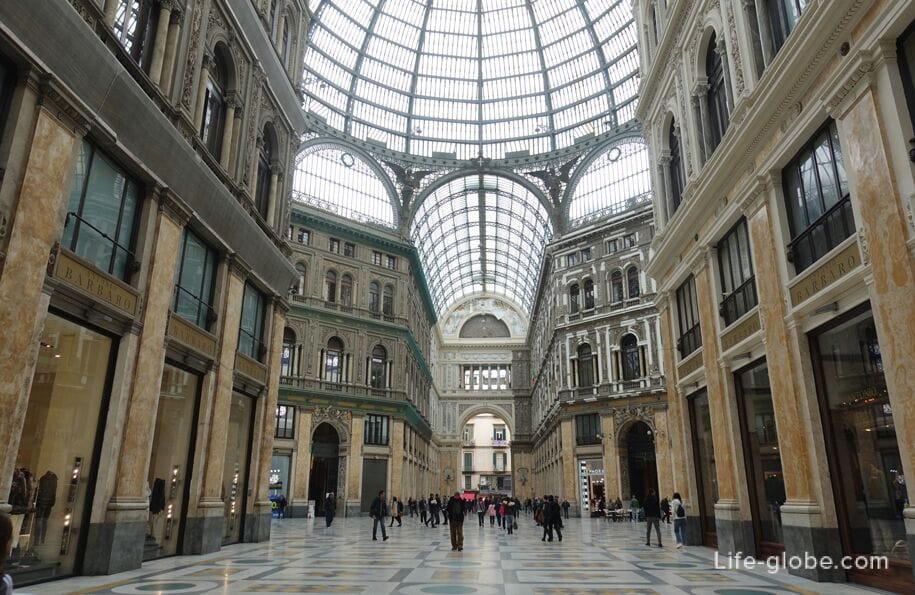
- Teatro San Carlo (Teatro di San Carlo) - one of the oldest Opera theatres in Europe;
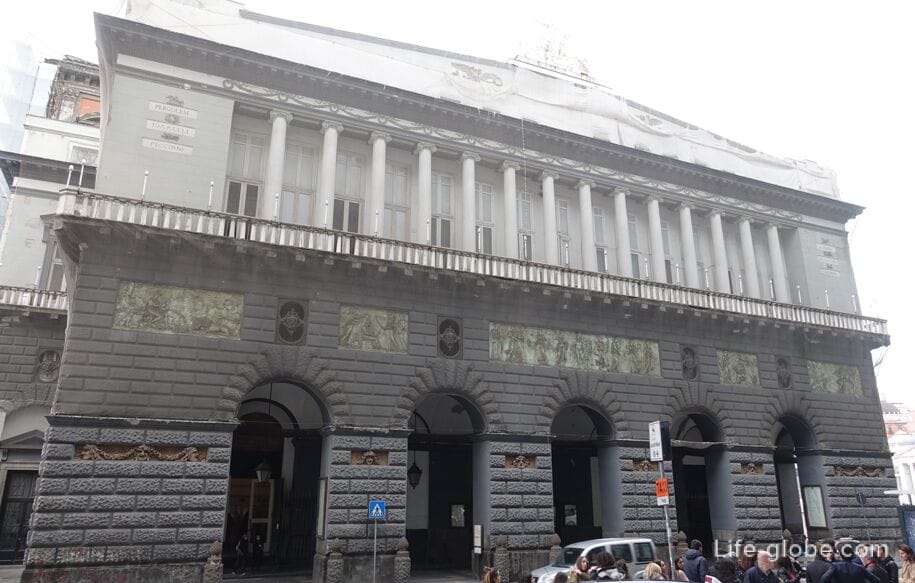
- Castel Dell'ovo (Castel Dell'ovo) or "Egg castle" / "the Castle of the egg," the oldest fortification built on a tiny island Megaride where the city was founded by colonists semeiskie.
In the castle there are several terraces at different levels and a balcony with scenic views of the waterfront, the Bay of Naples and some of the surrounding area;
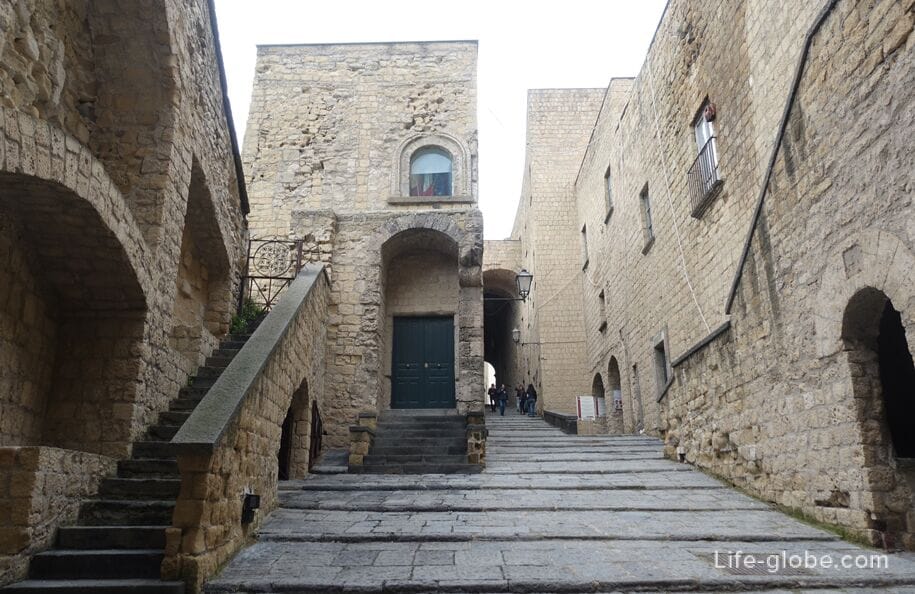

- castle Maschio Angioino (Castel Nuovo), or Maschio Angioino castle / New castle historical medieval and Renaissance castle.
At present the castle exhibitions and cultural events and is also a Civic Museum;
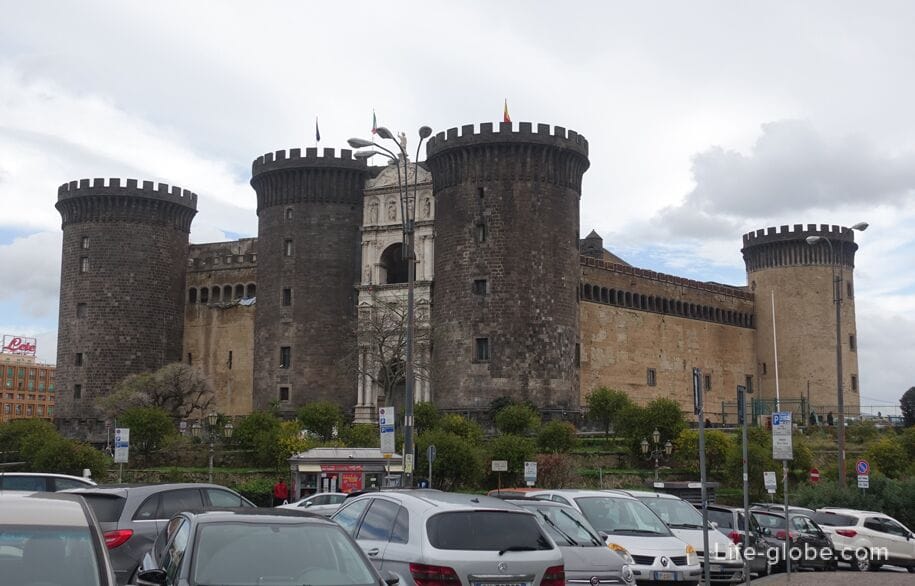
- castle Sant'elmo (Castel Sant'elmo) is a medieval fortress located on the Vomero hill and erected in 1329, in the form of a hexagonal star.
Currently the fortress is a historical monument - the monumental complex of Castel Sant'elmo open to the public and all interested persons. It serves as a Museum, exhibition hall and offices;
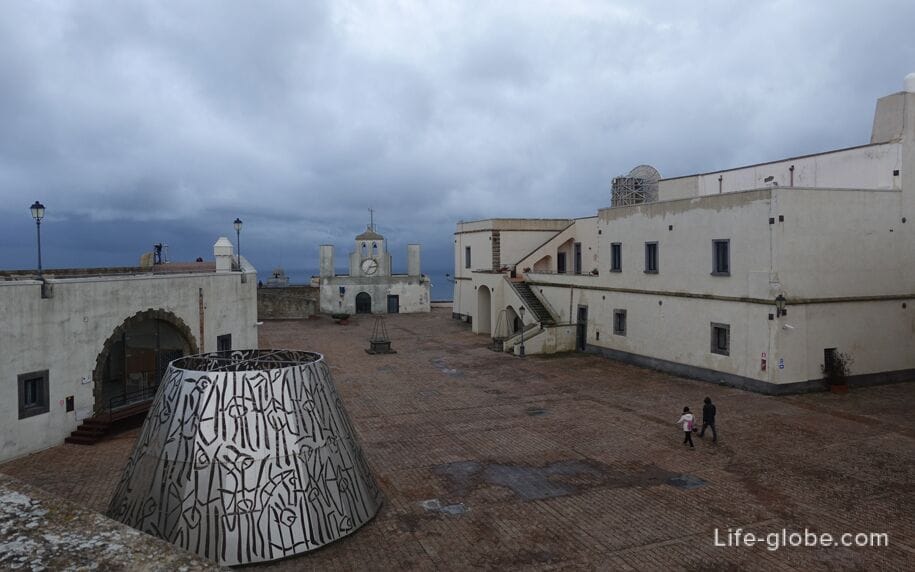
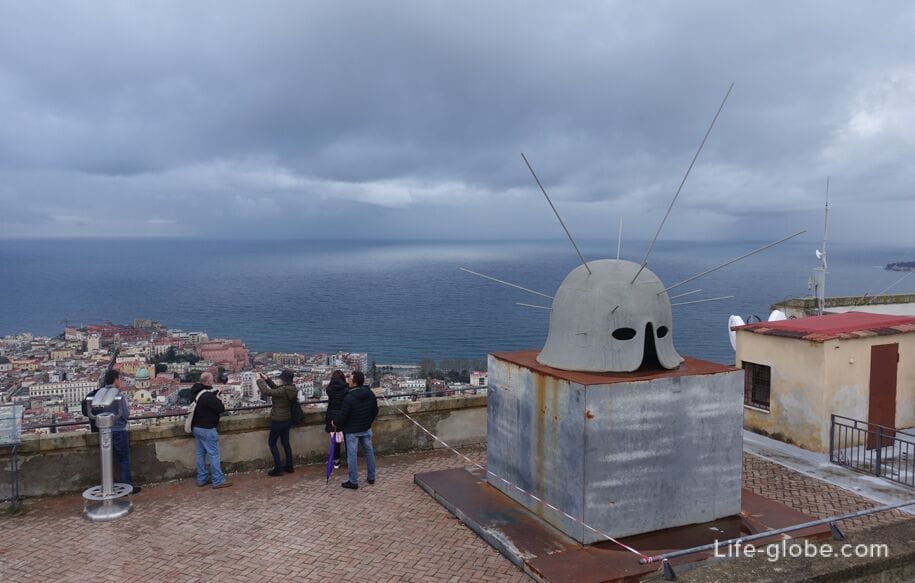
- monastery of San Martino (Certosa di San Martino) is a former Carthusian monastery Certosa di San Martino (Certosa e Museo di San Martino), which is now a Museum;

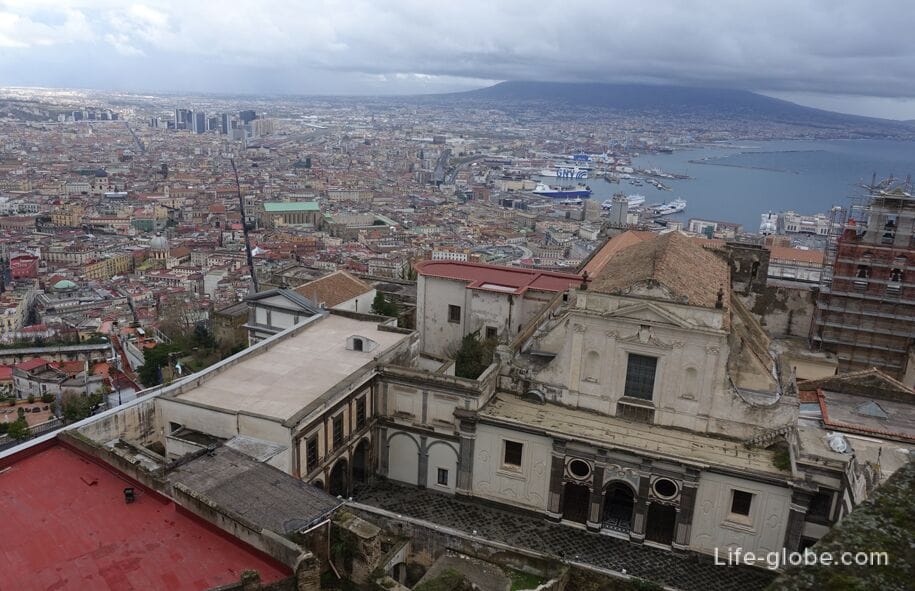
- Duomo of Naples (Cathedral Santa Maria Assunta), the main attractions are the Royal chapel "the treasure of Saint Gennaro" and the crypt of San Gennaro. And the oldest part of the Cathedral stands the Basilica of Santa Restituta, leading to the oldest surviving part of the structure is the baptismal of Saint John;

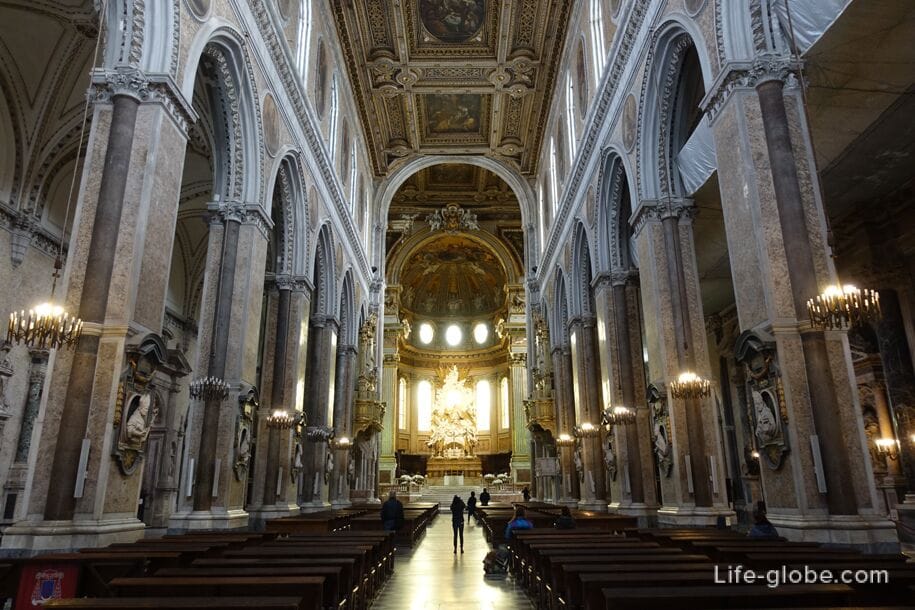
- The square of gesù Nuovo (Piazza del Gesu Nuovo) - one of the most important and famous squares and one of the symbols of the historical centre of Naples.
In the centre of the square stands a 30-metre marble obelisk of Jesus, also known as the obelisk of the Immaculate Conception - one of the best examples of Baroque sculpture in Naples.
The perimeter of the square is decorated with some of the most important churches in the city:
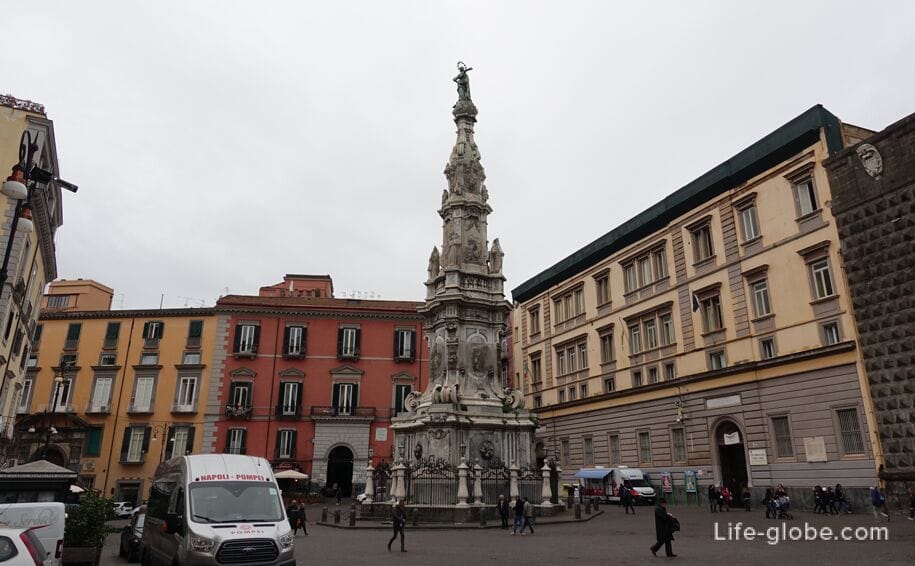
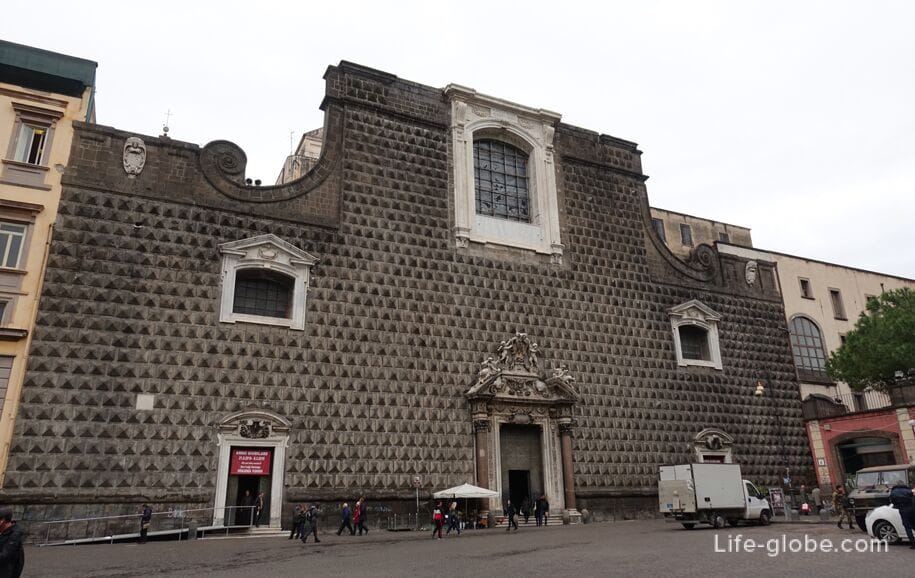
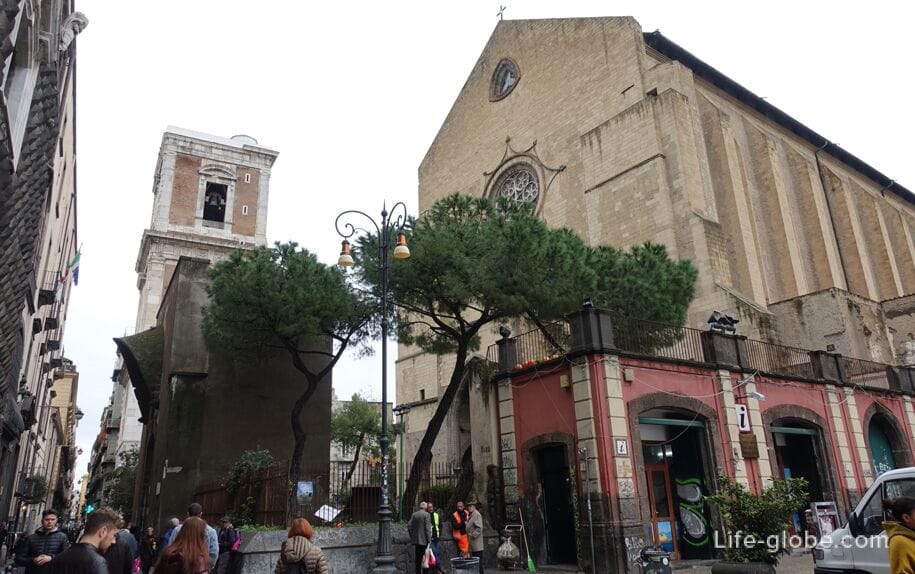
- Piazza San Domenico Maggiore (Piazza S. Domenico Maggiore), the dominant of which are: the namesake Church of San Domenico Maggiore and the obelisk rising in the centre of the square in memory of the plague epidemic;
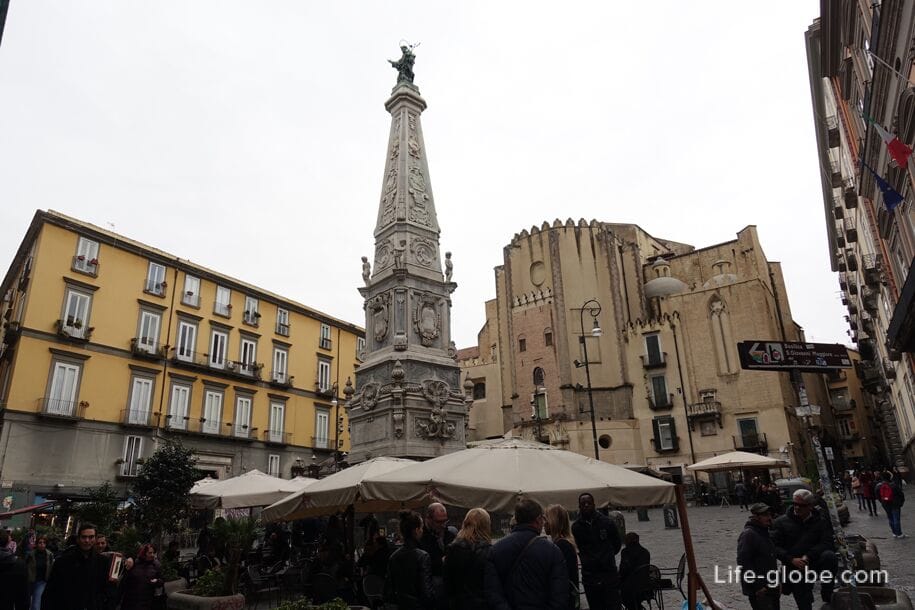
- The Sansevero Chapel (Cappella Sansevero). In the past, the private chapel and the tomb of the noble family of Sangro, which bears the title of Prince of San Severo.
The chapel contains works of art by some of the leading Italian artists of the 18th century, as well as marble headstones, representing various allegories of the virtues. At the present time the chapel is maintained as a Museum;
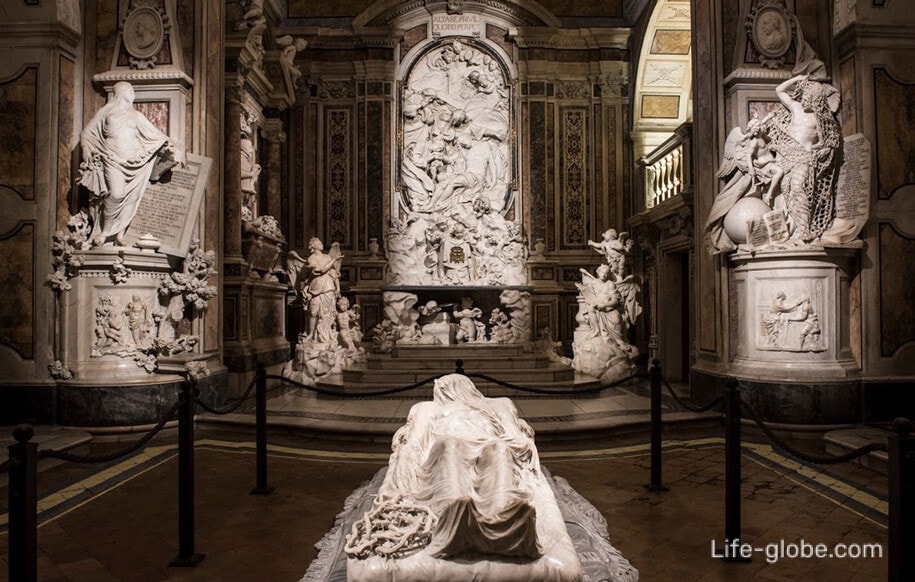
- Church of Sant Eligio Maggiore (Chiesa di Sant'eligio Maggiore), which is an iconic building built in the Gothic style in the Angevin period (1270).
Remarkable and Arco di Sant Eligio (Arco di Sant'eligio) of the 15th century, rising on two floors, and serves as a connection between the bell tower of the Church with the neighboring building. On the facade of the first floor arches are a large clock;

- National archaeological Museum of Naples (Museo Archeologico Nazionale di Napoli) - formerly the Palazzo del Studi - Palace in the heart of Naples, whose construction began in 1586 as cavalry barracks, then located outside the walls of Naples.
In 1612, the Viceroy don Pedro Fernandez de Castro, count of Lemos, decided to move into the unfinished building of the University of Naples. At the present time within the walls of the Palace houses the national archaeological Museum of Naples;
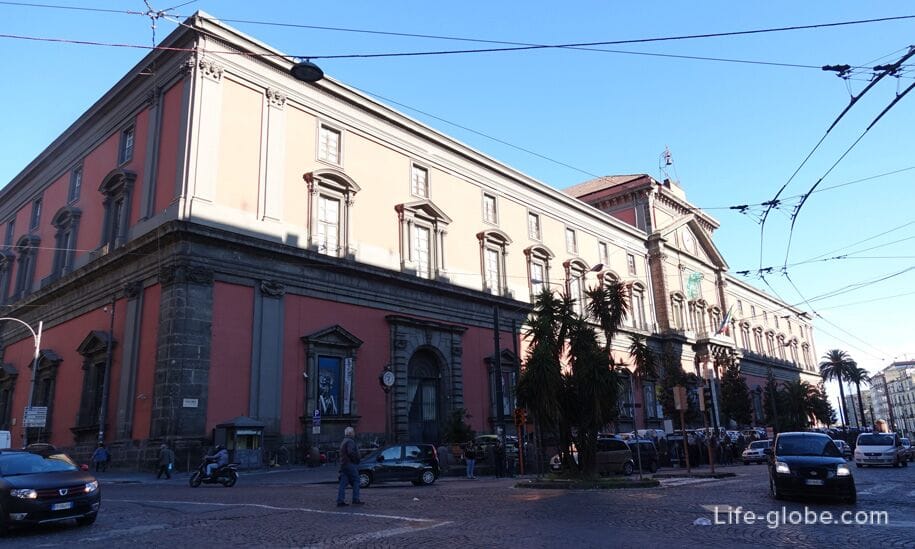
- The Royal Palace of Capodimonte (Capodimonte Royal Palace) - the former summer residence and hunting Lodge of the kings of the two Sicilies, and one of the two Royal palaces in Naples. Currently, the walls of the Palace is one of the largest museums of Italy, the National Museum and galleries of Capodimonte;
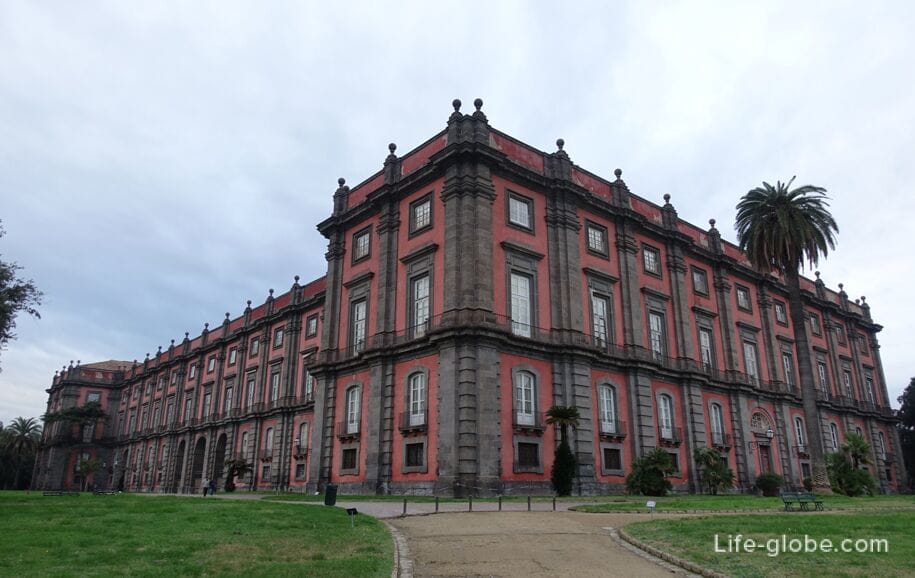
- Villa Pignatelli, was built for Ferdinand Acton in 1826 as a neoclassical residence. Outside the Villa you will find a garden and domestic premises is a Museum (Museo Pignatelli);
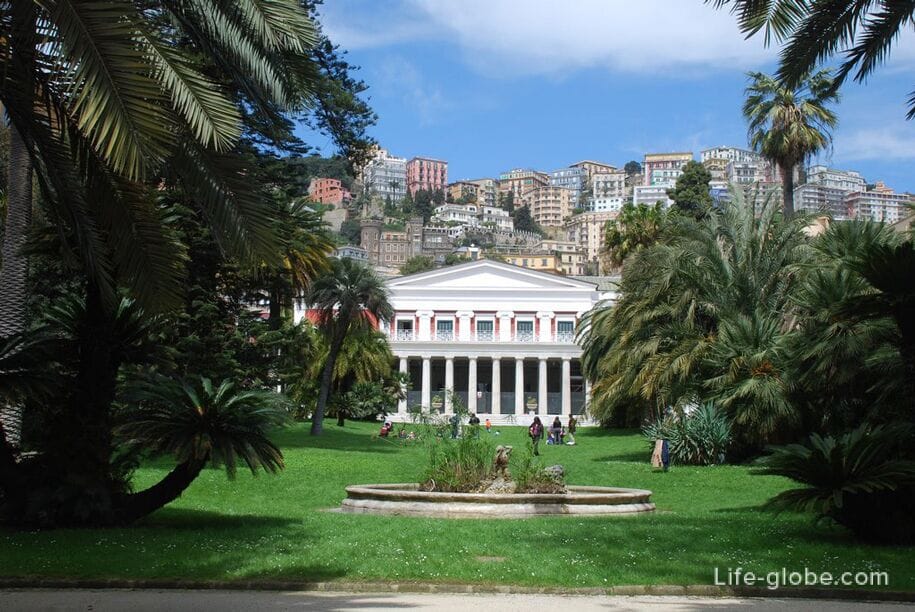
- Villa Floridiana - a historic building surrounded by a Park, erected between 1817 and 1819 years, after Ferdinand I of the House of Bourbon, King of the two Sicilies, acquired the property. The Villa is currently a decorative arts Museum Duca di Martina. Learn more about the attractions of Naples...
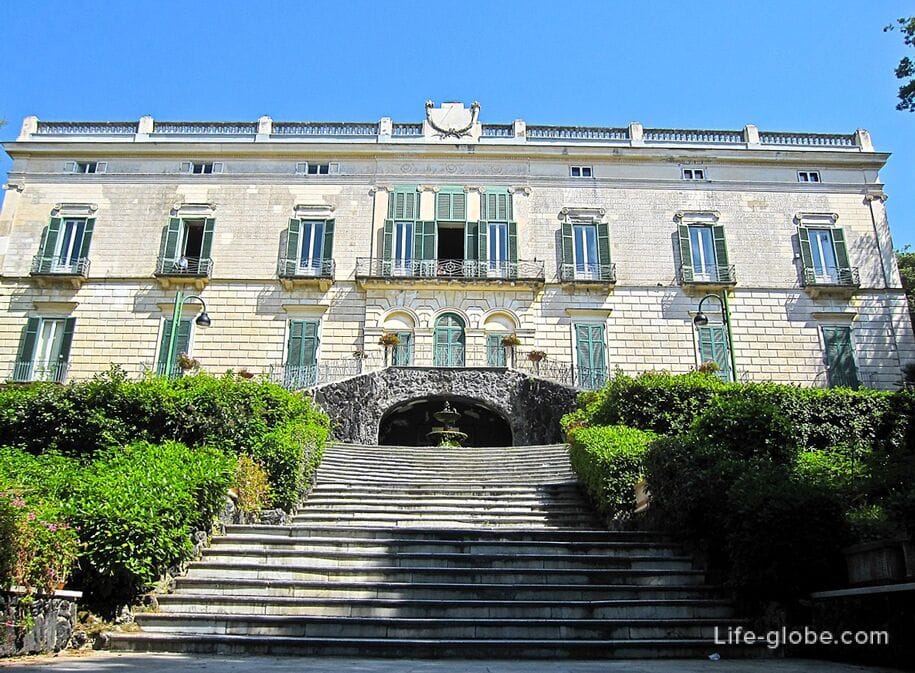
The underground city of Naples extends beneath the historical center and goes North. For centuries galleries near Naples were used in different ways. Born after the extraction of the tuff to build the city, they were used as aqueducts, and cemeteries as shelters during the Second world war.
Currently, a considerable part of the underground object is still hidden and unexplored.
The main objects of the "Underground Naples" are:
- catacombs of San Gennaro , or St. Januarius (Catacombe di San Gennaro), the largest Christian catacomb complex in southern Italy and one of the oldest cemeteries of the early period of Christianity, the core of which dates back to the 2nd century ad.
The catacombs of San Gennaro are located on two disjoint levels, characterized by wide spaces and two underground basilicas;
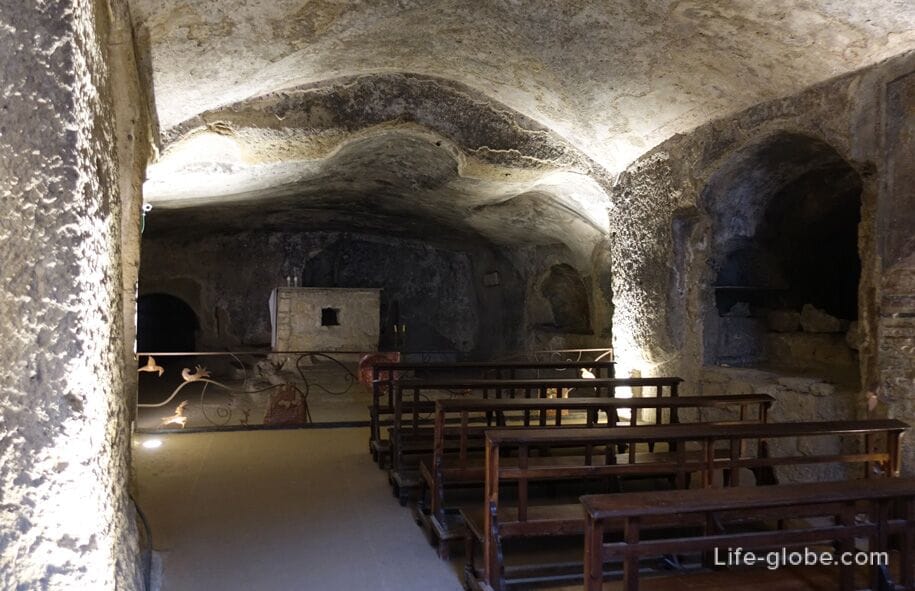
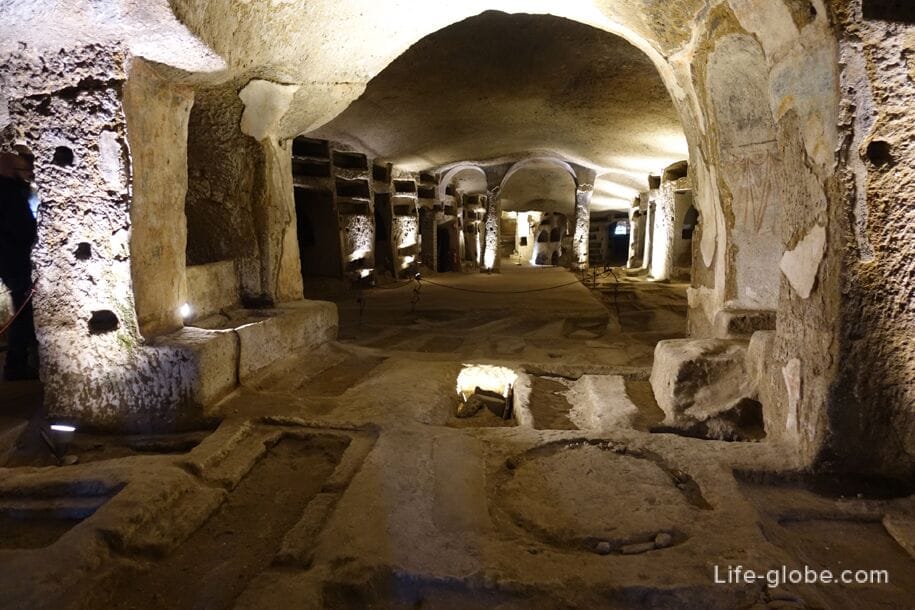
- catacombs of San Gaudioso (Catacombe di San Gaudioso), above which, between 1602 and 1610 was built the Basilica of Santa Maria della Sanita, which is currently accessed to the catacombs.
In the catacombs were buried St. Gaudioso - Bishop of North Africa, exile, stayed in Naples and lived in town until his death. Since then the catacombs have been expanded. And from 17 in the catacombs were placed mainly graves of the aristocracy and the clergy;
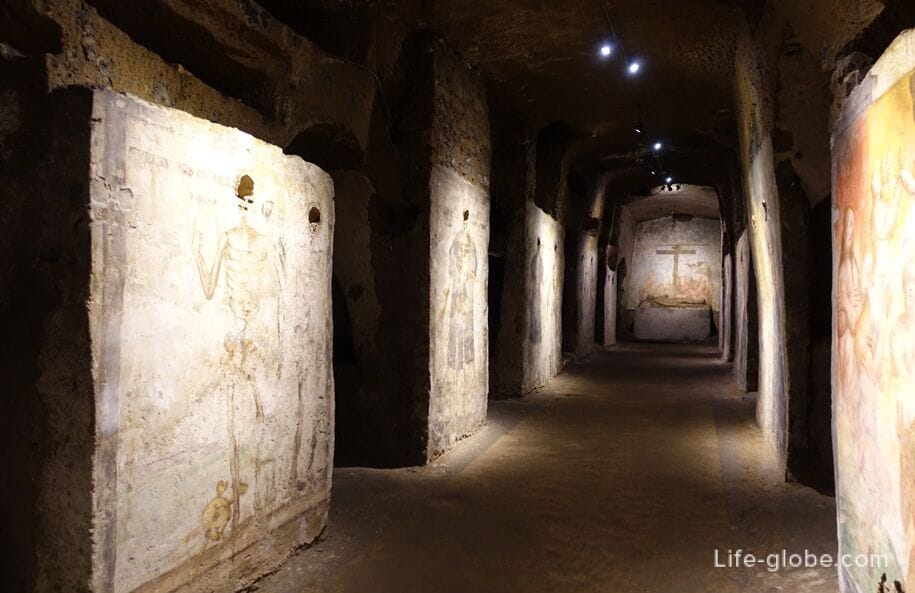

- Fontanelle cemetery (Cimitero Delle Fontanelle) - an ancient cemetery of Naples, is currently not used for its intended purpose and which is a crypt where are the skeletal remains of people.
The cemetery is located in the cave in the tuff rock, consists of three large tunnels trapezoidal cross-section connected by side corridors (passages), each of which has its own name and at the sides of which are fenced, which contains the skull, the large tibia and the femur. Many bones and skulls just piled in heaps, while others are in boxes;
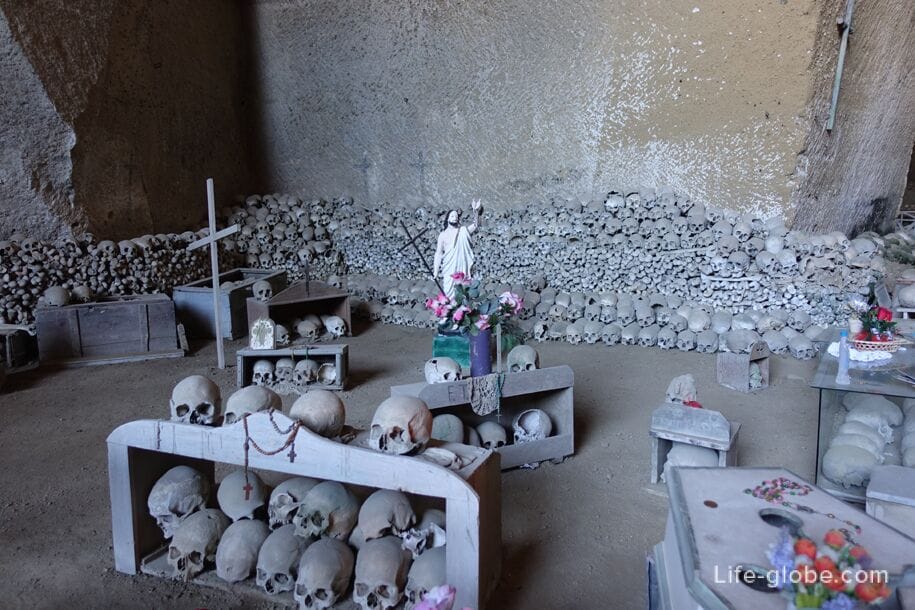
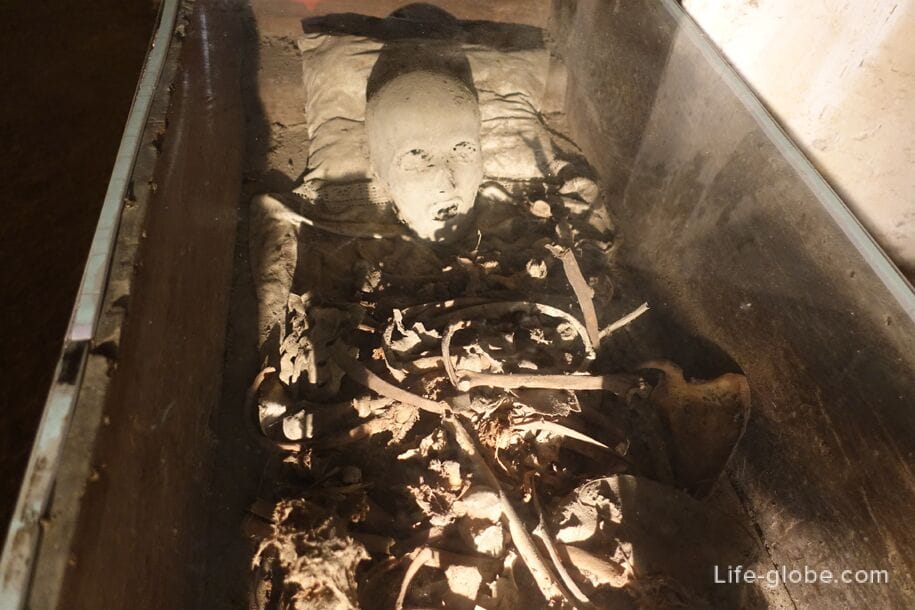
- museums "Underground Naples":
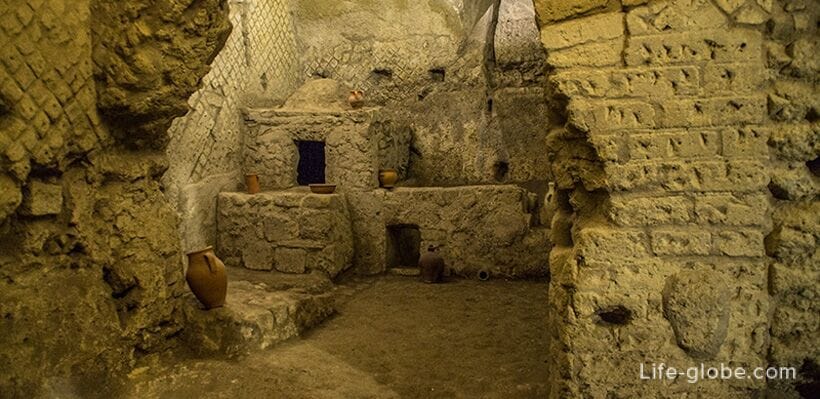
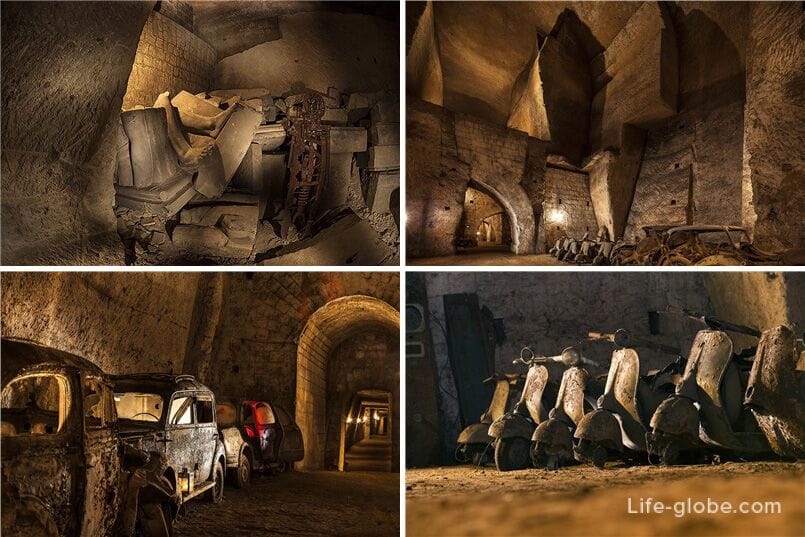
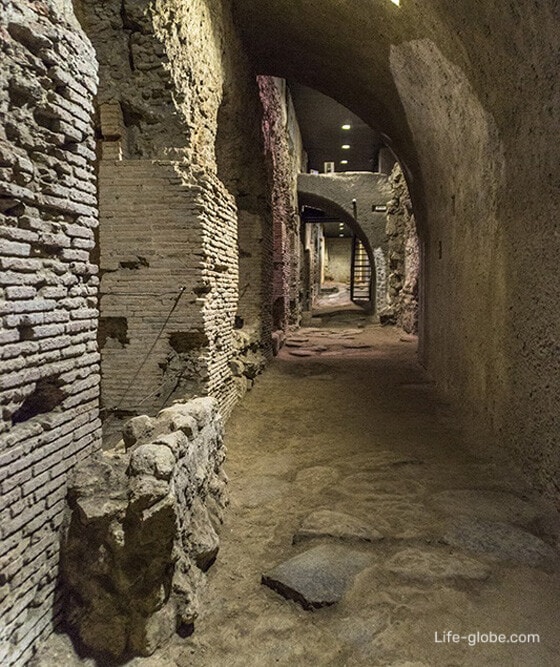
In the centre of Naples, and beyond, lots of interesting streets and alleyways, which is something to see. In the historical centre of the city weaves tricky one street flows smoothly into another, while outside the "old city" streets are more than wide and long.
However, among this diversity, there are several the most popular and therefore most crowded and exciting streets in the center of Naples.
Street Spaccanapoli (Spaccanapoli), a narrow street crossing the historical centre of Naples from the southwest to the northeast.
This street you won't find on the maps, officially it consists of several independent streets, smoothly flowing into one another. The total length of Spaccanapoli, the leaves about 2 kilometers.
The morning today is the invisible vein of the city; - the place where the main tourist routes in Naples and attractions - plenty of shops and souvenir stalls, cafes, small restaurants and taverns, as well as small boutiques and souvenir shops. Read more about Spaccanapoli...

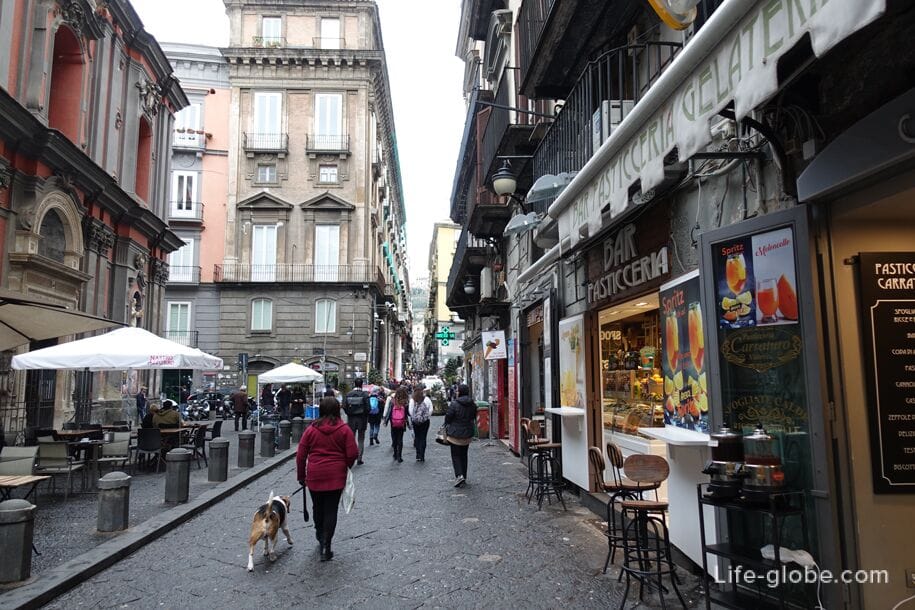
Toledo street (Via Toledo) is the main artery of Naples, one of the busiest streets in the city.
Along the street: the houses, churches, attractions, several small areas, an abundance of cafes, restaurants, eateries, as well as the most famous passage of the Naples - Galleria Umberto I hotels and apartments, shops and boutiques, as the world's most famous brands, and less recognizable.
Length of tour is approximately 1.3 kilometers, stretches from Piazza Trieste and Trento, near Piazza Plebiscito to Piazza Dante. Part of the street is closed to travel by public transport and is completely pedestrian. Read more about the streets of Toledo...

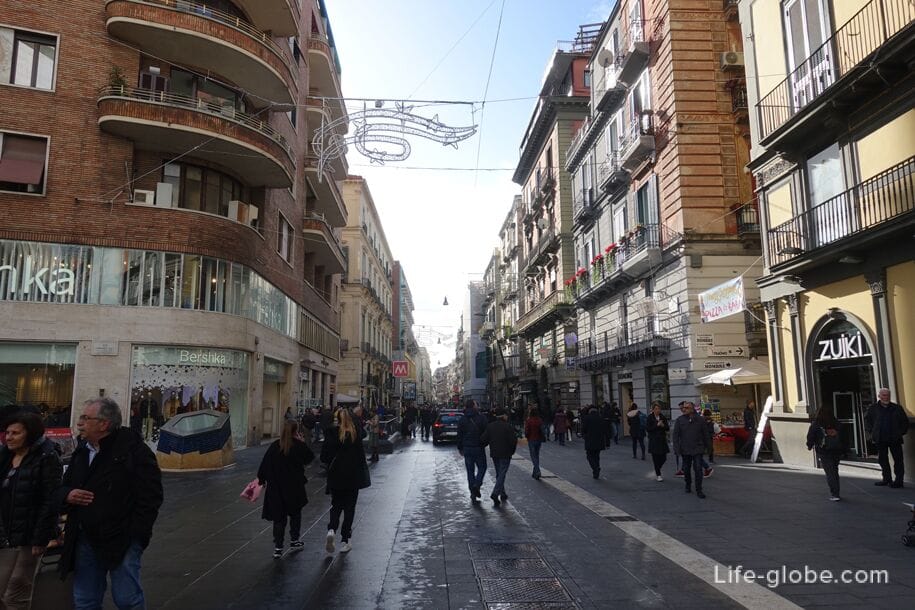
Street of Naples (Via Toledo), the length of which is about 600 meters away from Piazza Trieste and Trento to Piazza dei Martiri.
This pedestrian street closed to the passage of the main flow of public transport. At any time of the year in the street crowded on both sides of the ranks lined the building on the first floor where an abundance of shops, boutiques, souvenir shops, cafes and restaurants, also has attractions, a theatre, several hotels and guest houses. Read more about the street Chiaia...

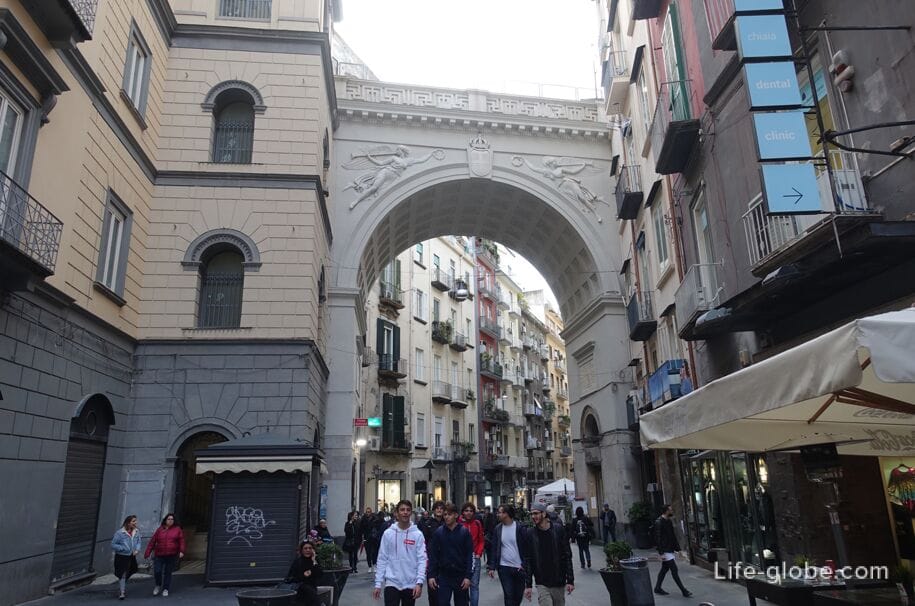
Street Pedamentina (Via Pedamentina San Martino) - representing the ladder, say, consisting of 414 steps, running along the slope of the Vomero hill and connecting the old centre of Naples with two sites: a former monastery Certosa di San Martino and Castel Sant Elmo.
The street is fully pedestrian, built many centuries ago. Some points of stairs panoramic views of Naples, part of the Gulf of Naples and the surrounding area. In good weather you can enjoy the delights of Vesuvius. For these reasons, the ladder Pedamentina is also called a panoramic staircase. At the top of the stairs is an observation deck. Read more about panoramic stairs Pedamentina...

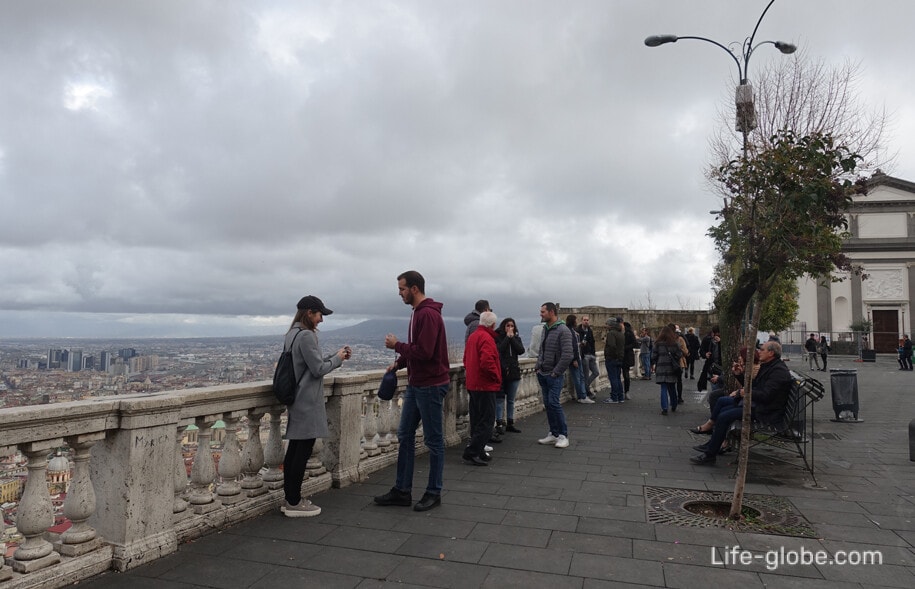
Among the most famous and attractive parks of Naples it is possible to allocate:
Park of Capodimonte (Capodimonte Park) - historic public Park located on the hill North of the centre of Naples. This is a large beautiful Park, one of the largest in Italy, designed in the English style of gardening, which is also called landscape work of art. Read more about the Capodimonte Park and its attractions...
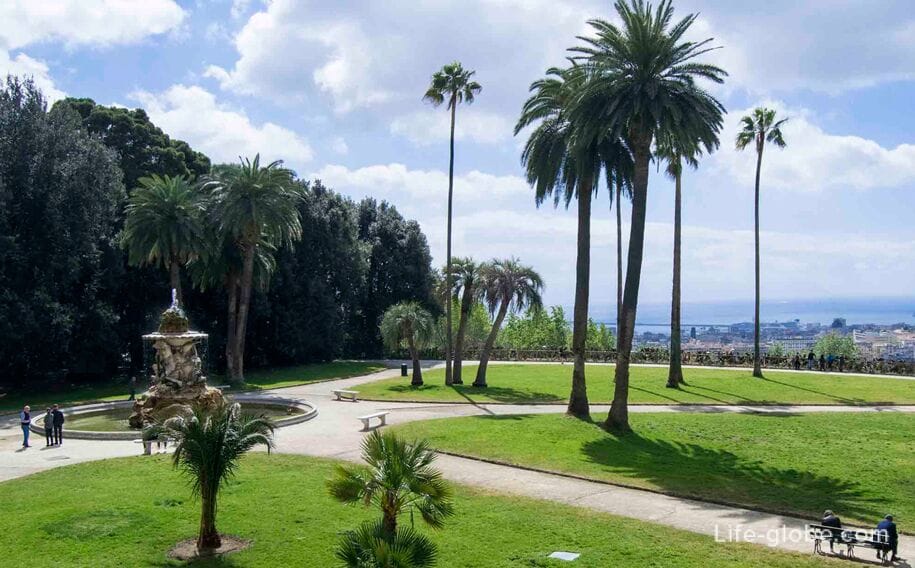
Park area near Villa Floridiana;
Park Malocello (Molosiglio Gardens), located near the square Plebiscito, between the Royal Palace and the Marina;
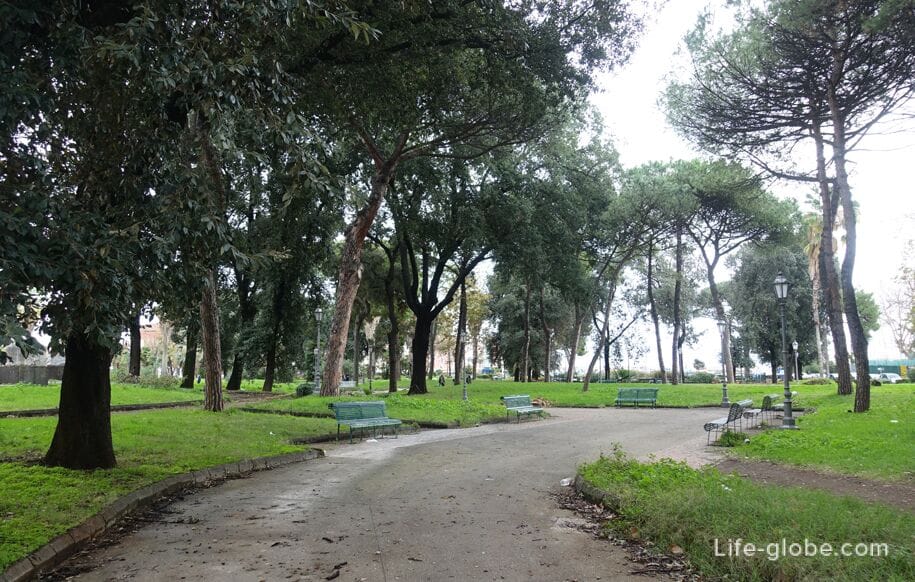
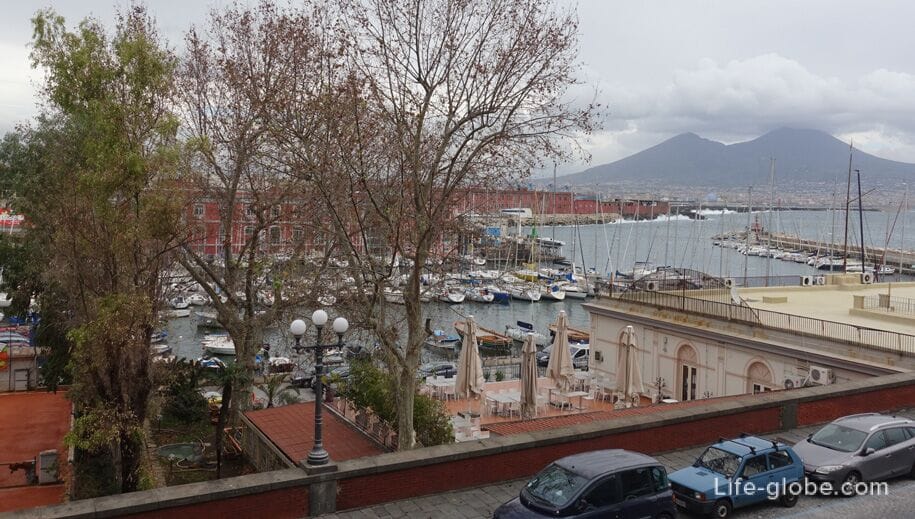
- city Park, Riviera di Chiaia;
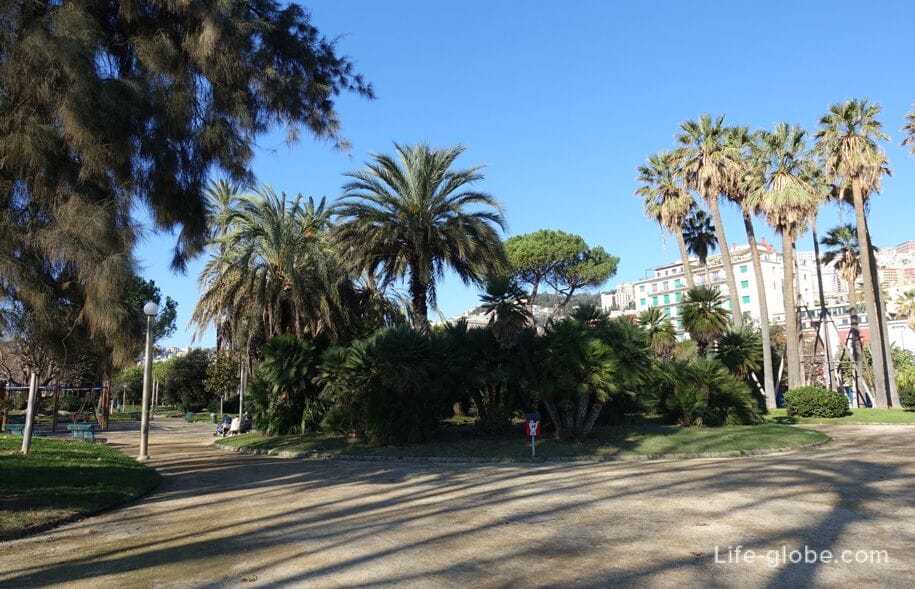
city Park Camaldoli (Parco Urbano dei Camaldoli), which places for walking and recreation. Within the Park area are: monastery (Monastero della Visitazione) and the eponymous observation deck, which offers gorgeous panoramic views;

- virgiliano Park, also known as the Park of Remembrance (Parco Virgiliano), located on the cliff top, near the island of Nisida. With view points that offer stunning views of the Bay and the surrounding area. The main entrance from the street Virgilio (Viale Virgilio);
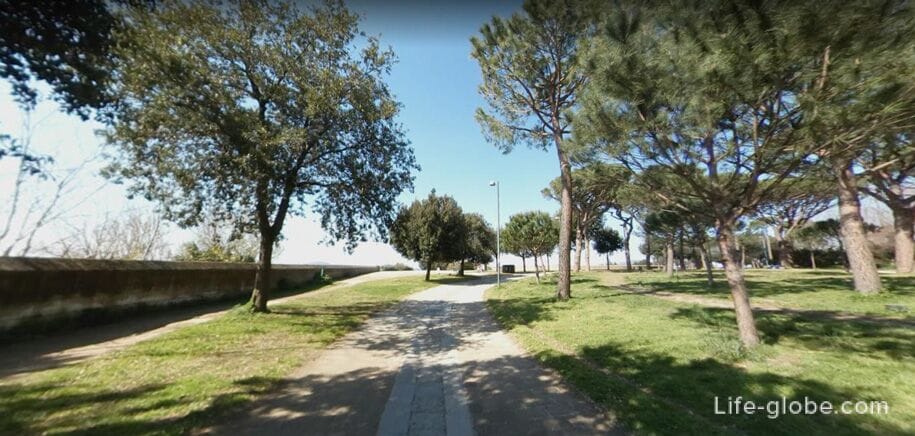
Botanical garden of Naples (Botanical Garden of Naples), founded in the early 19th century (website);
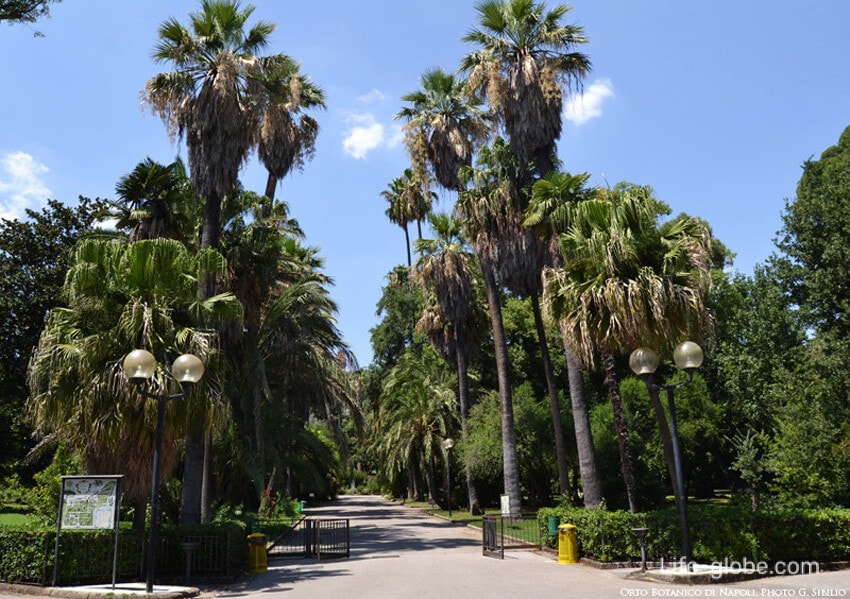
- the Naples zoo (Naples Zoo (website);

- a small amusement Park "Panda Park" (Panda Park), located near the main entrance to the virgiliano Park (website);
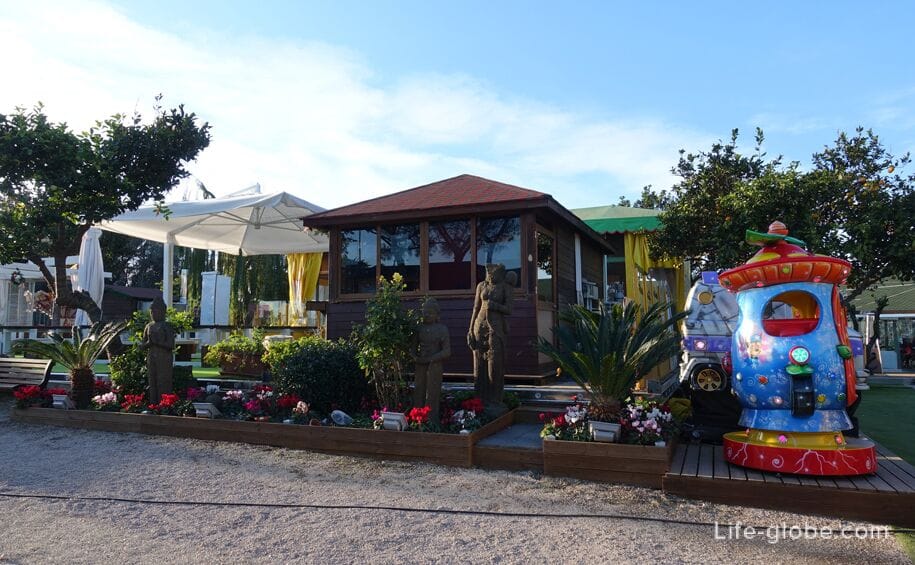
- amusement Park Edenlandia (Edenlandia), in which 28 rides and attractions, divided into seven themed areas, there is a power point and a dedicated area for festivals and concerts (website);
outside Naples, in the immediate vicinity are parks: water Park and amusement Park Park Pareo (Pareo Park) the largest Park and water Park areas, which are 7 swimming pools, 17 water slides and water rides, as well as recreation areas and public catering (site); water Park Free Time (Free Time (the website) and the amusement Park and water Park Valle Dell'orso (Valle Dell'orso (the website).
Sights in and around Naples can be viewed:
- archaeological parks Herculaneum and the Pompeii archeological site - ancient Roman city, is famous because in 79 ad, was destroyed and buried under a layer of pyroclastic flows during the eruption of Vesuvius;

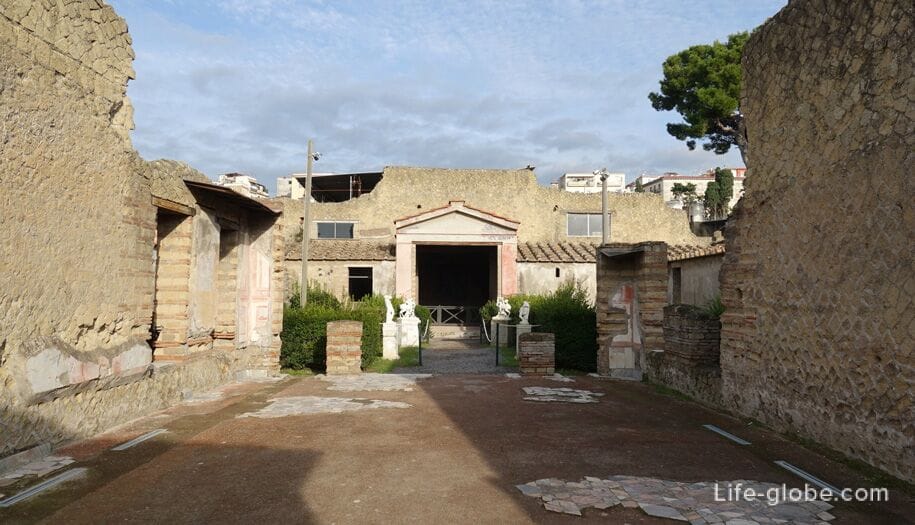
- Vesuvius national Park;
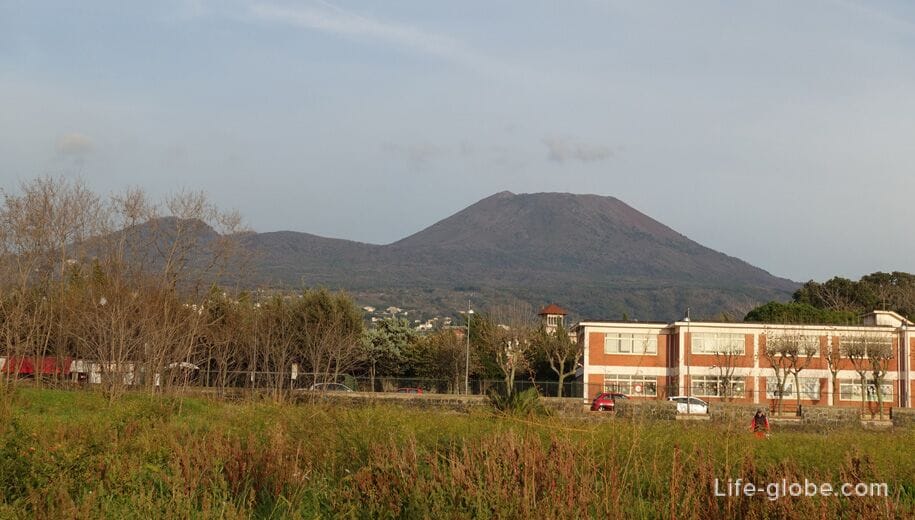
- archaeological Park and Phlegraean fields (Parco Archeologico dei Campi Flegrei), which is composed of: Kuma (Sito Archeologico di Cuma), archaeological complex of the Terme di Baia (Complesso archeologico delle Terme di Baia), the Flavian amphitheatre (Anfiteatro Flavio Neroniano) and Museum;
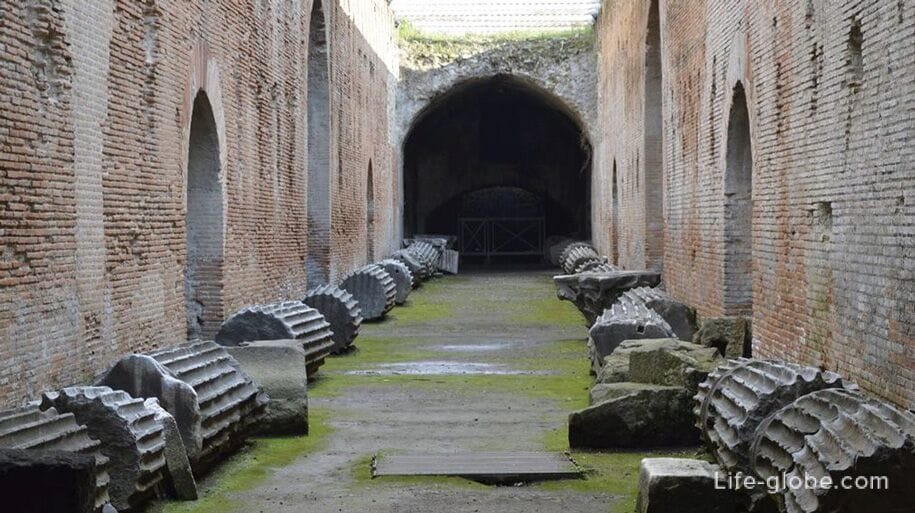
Royal Palace of Caserta is one of the largest buildings erected in Europe in the 18th century, and the 18th largest in the world. Around the Palace you will find a most extensive English Park in Italy, among the attractions which you can select fountains and numerous sculptures.
Many tourists use the Naples not only as the main and only place to visit, but also as a starting point, pausing in the Naples for a few days, to visit such famous places as:
- the Islands of Ischia and Capri, which ferries
- the Sorrento Peninsula, where the main and most beautiful places are: the town of Sorrento and the Amalfi coast (the southern coast of the Peninsula) - Positano, Amalfi, atrani, Ravello, Minori, Maiori, etc. which are from Naples and can be reached by public transport, rented car or taxi.
Tourist bus Hop On Hop Off offers several bus tours around Naples:
- tour of the main attractions of Naples is the most common route, which includes two lines, line a passing through the main attractions of the city centre, the B - line along the coast. The price includes an audio guide on Board the bus for 8 languages and free Wi-Fi. Enter the bus in and out of itself is possible near the sites. The ticket is valid 24 hours;
literary tour of city sights with a guide on Board;
- Shuttle buses to the Museum of Capodimonte;
- Shuttle bus to the Royal Palace of Caserta (there and back);
- Shuttle bus to Pompei + audio guide in 5 languages on the bus (there and back).
Read the terms of each route, stops and prices on the website.
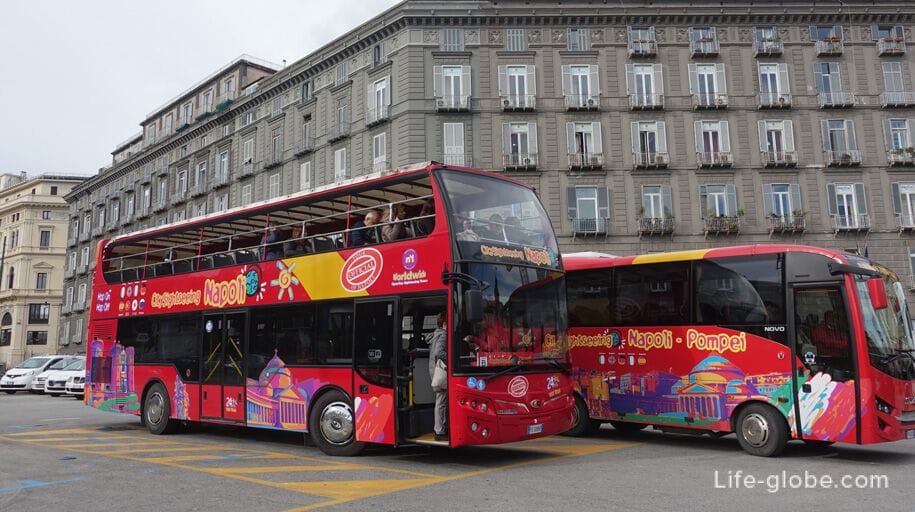
Also the city run tourist buses, tram Tramvia Napoli, offering its customers a panoramic tour of Naples. Terms, route, stops, timetable and cost can be specified on the website.

Tourist card (city travel card) giving benefits to tourists indefinitely, 24, 48 hours, etc.
Naples city Pass includes:
- transfer from/to airport;
- transfer to Pompeii round trip + entrance tickets to Pompeii;
- bus tickets Hop on Hop off Bus tour 24 hour;
- 20% discount entry to many museums, attractions, tours and excursions, such as such as the national archaeological Museum of Naples, the national Museum of Capodimonte, excursions to Capri, Anacapri, Amalfi coast and many others!
To clarify the terms and benefits of city Passes and tickets can be purchased on the official website.
Modern Naples, a densely populated city that has an international airport, seaport, rail station and extensive network of public transport, which include: trams, buses and trolley buses, there is a metro a station, which is known for architectural elegance, as well as three public Elevator and four funicular railway (Centrale, Chiaia, Montesanto and Mergellina), acting as a regular urban transport.
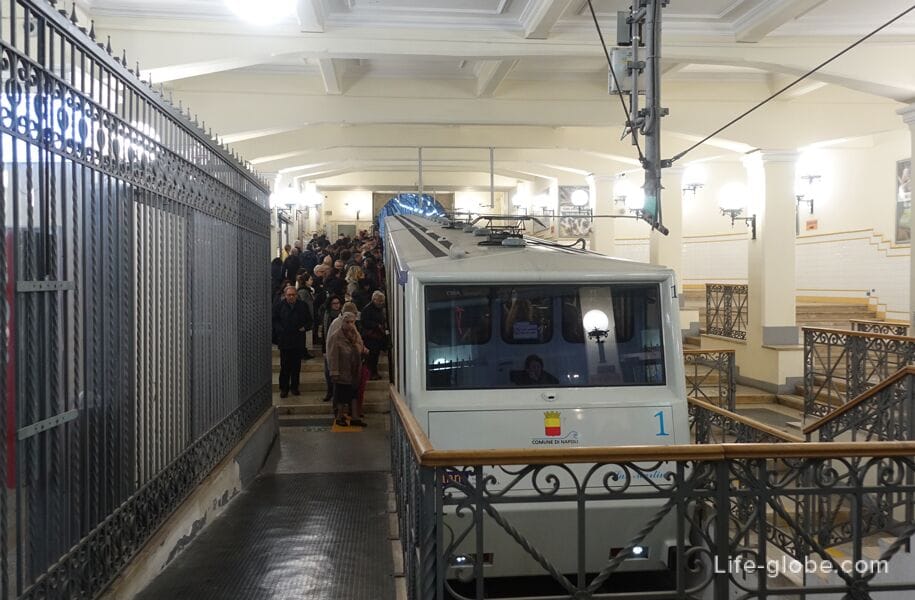
The main train station is Napoli Centrale (Napoli Centrale), located on Piazza Garibaldi and Naples connects with many major cities of Italy (Benevento, Rome, Milan, Florence, Bologna, Venice, etc.).
Under the station of Napoli Centrale station of Napoli Piazza Garibaldi (Napoli Piazza Garibaldi) station to local destinations, connecting Naples with the area, for example, Ercolano, Pompeii, etc.
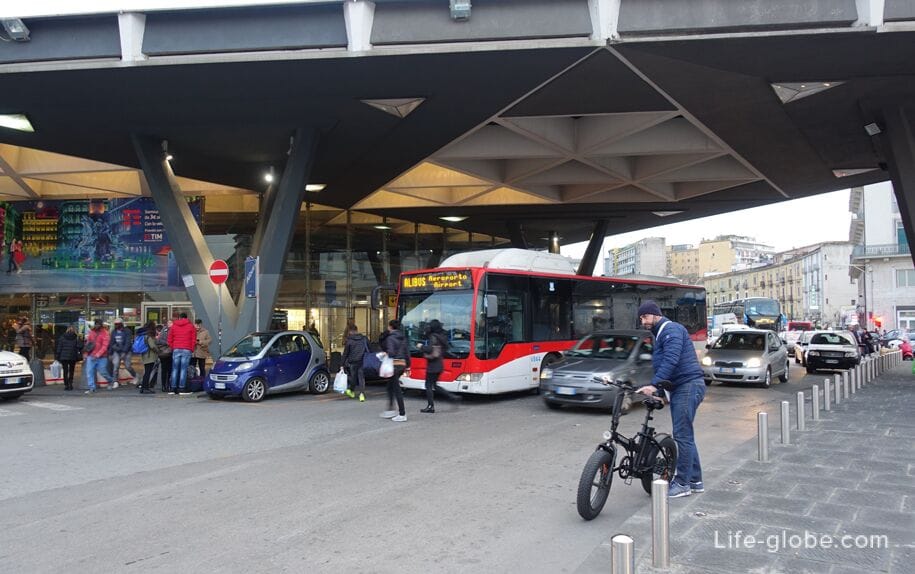
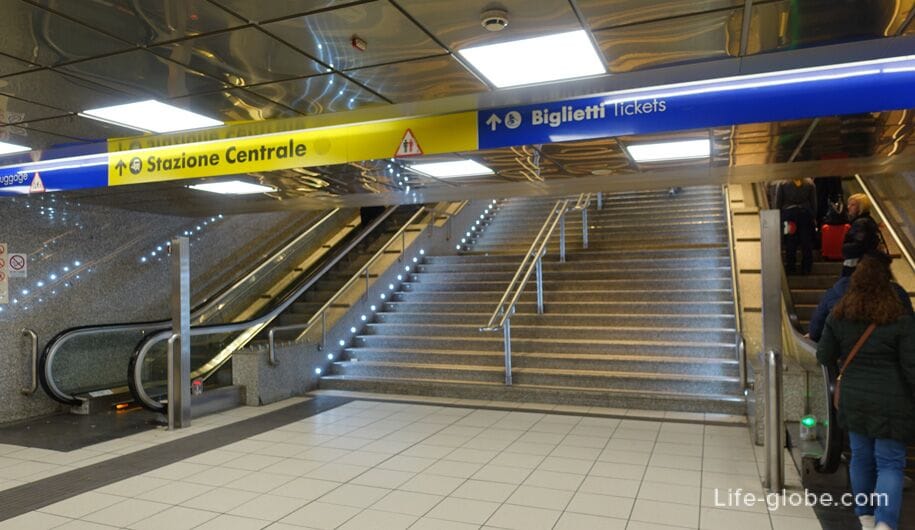

Also popular station Port of Nolana and Napoli Garibaldi that connects Naples with Ercolano, Sorrento and Sarno.
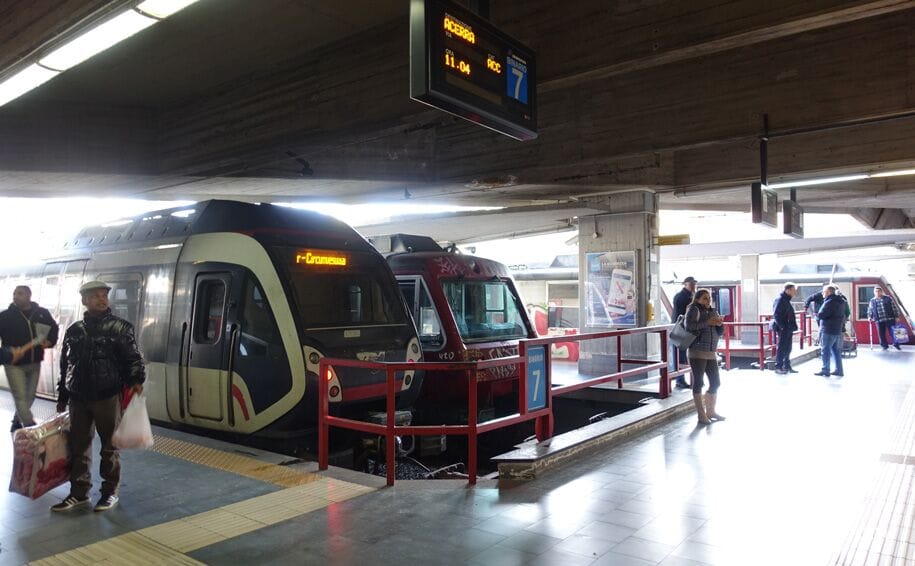
Rail transportation provides Trenitalia, Circumvesuviana, Ferrovia Cumana and Metronapoli.
In the port of Naples there are several public ferry, which connects many points in the Neapolitan province, including Capri, Ischia and Sorrento and the province of Salernitan, including Salerno, Positano and Amalfi. Services are also available to destinations further away, such as Sicily, Sardinia, Ponza and the Aeolian (Aeolian) Islands.

Naples is traditionally considered the birthplace of pizza!
Initially, the pizza happened as the food of the poor - on the cake or esto piled "all that was in the house" (leftovers) and baked under the cheese or not. When Ferdinand IV, the dish became popular among the upper classes. It is known that the favorite of many - a classic pizza Margherita (Margherita) was named in honor of Queen Margherita of Savoy after her visit to the city, because the combination of ingredients used in this pizza, the most loved by the Queen.
Very popular pizza Napoletana (pizza Napoletana).
The ingredients of the classic Neapolitan pizza are strictly regulated by law since 2004, and must include wheat flour type "00" with the addition of flour type "0" yeast, natural mineral water, peeled tomatoes or fresh cherry tomatoes, mozzarella cheese, sea salt and olive oil.
Generally in Naples many pizzerias and trattorias, pizza variety. Traditional pizza and to this day should happen in a wood oven, this method of heat obrocki dishes is considered the traditional classics.
In most of the schools of Naples, serving pizza, cook in such ovens, however, there are those which use electric furnaces. Find a school with the oven is a snap, those of the majority. The pizzas will be different sometimes too crispy crust and irregularities.



In Naples, pizza is so popular that during peak hours, in the most famous places of the city, the queues are even on the street.
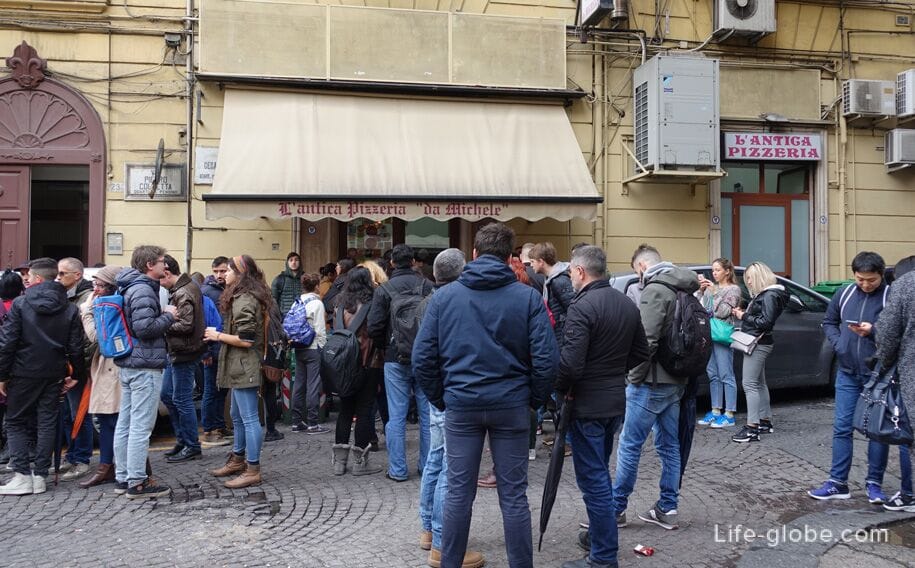
However, no one is famous pizza in Naples. Also popular spaghetti and other pastas, Neapolitan ragu, seafood and fish, including "impepata di cozze" (mussels with pepper), "purpetiello affogato" (octopus poached in broth), "alici marinate" (marinated anchovies), "baccalà alla napoletana" (salt cod) and "baccalà fritto" (fried cod), a dish that is usually eaten during the Christmas period.
And also, Pizza fritta - fried in lots of oil (deep-fried) calzone closed pizza is one of the most popular street food; snacks: seafood, rice balls, pumpkin and zucchini flowers, fried (fat and calories).
And, of course, like any city of Italy, Naples is not complete without wine, cheeses, tomatoes, meats, Italian and European dishes.
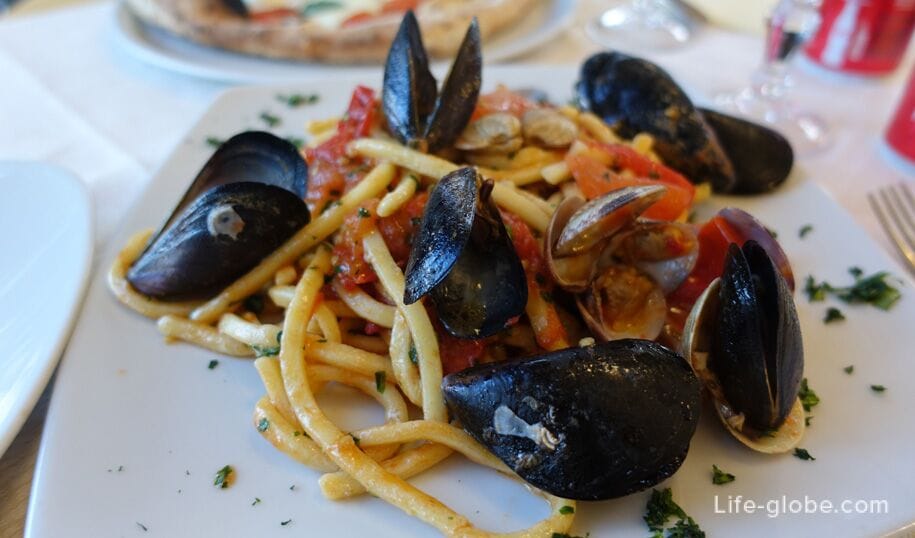
Naples is famous for its desserts: this is a small Baba Neapolitan (Baba al Rhum), sfogliatella (sfogliatelle) - puff or shortcrust pastry in the form of shellfish, are quite hard and crunchy, maybe with different fillings, as well as many other different pastries and cakes.
"The taste and color...", but for us, the variety of cakes, only in appearance is such, most to the taste, about the same time to try that. But the classic Italian croissant with a delicate white cream or chocolate, and Sicilian cannolli - out of competition))

Taralli (taralli) or tarallini (tarallini) - bakery product of Italian cuisine, like our bagels or biscuits. Common in southern Italy, including in the Campania region. Can be different flavors, from neutral and sweet, to salty and bitter, with nuts and those without.
Some small shops of the historic center of the city free to taste a piece tarali. Before buying, nevertheless, I advise you to try, they are very spicy - not everyone likes.
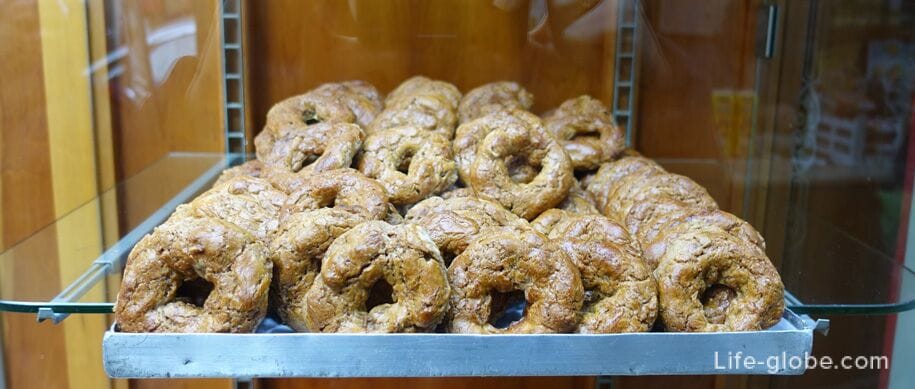
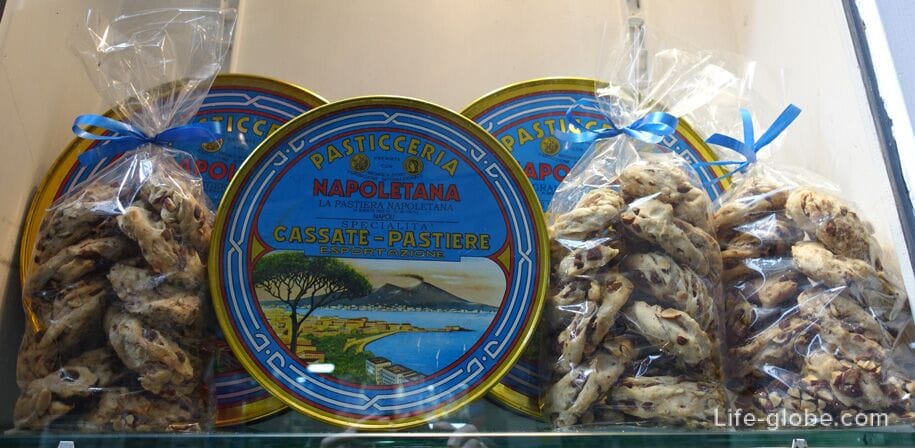
The choice of accommodation in Naples is very large and diverse, here you can find accommodation for every taste and budget, from cheap hostels to luxury 5-star hotels, villas and apartments, located near the coast and in the historical centre of the city, and more remotely from those.
All accommodation facilities in Naples, from budget to luxury, you can view and book here
Naples international airport Capodichino (Aeroporto Internazionale di Napoli - Capodichino / Capodichino Airport).
The Capodichino airport regularly receives and sends, internal, from other Italian cities and international flights from Europe, Morocco, Egypt, Israel, USA, etc., including direct flights connecting Naples with London, Russia and Ukraine. Cheap flights to Naples...

To get from the airport to the centre of Naples, and from Naples city centre to the airport, you can:
Taxi/Shuttle Service
To get from Naples airport to Naples city centre and other cities and resorts in Italy, more convenient and faster than a taxi. Book a taxi/Shuttle service is possible in advance, even from home. At any time of the day, at the airport, you will meet your driver with a sign, which will be written your name and surname. For taxi is enough to tell us your flight details! To know the cost of taxi ride here...
Car rental
If you are planning to travel to Italy, then the ideal option would be to rent a car. To choose and order a car in advance, at the appointed time, your car will be waiting for you outside the airport. To see and pick up the car here...
Buses Express
Buses Express – Shuttle-buses Alibus (the Alibus) runs from Naples airport to the city center and port. Stop at Piazza Garibaldi (near railway station).
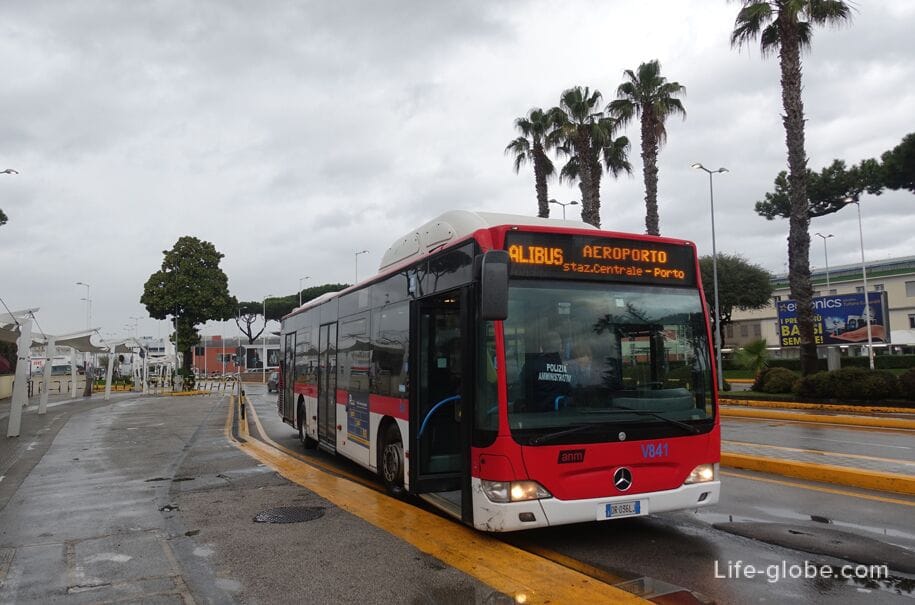
City buses
Municipal buses run into the centre of Naples. Stop is close to the airport, a distance about 500 meters.
Bus No. 182 runs to Piazza Dante square (piazza Dante). Bus # C68 runs to Piazza Carlo III (piazza Carlo III). Read more about how to get from Naples airport to Naples city centre...

Of the many Italian cities (Rome, Milan, Florence, Pisa, Bologna, Venice, Bari, etc.) can be reached by trains (trains) and buses.
Italy belongs to the Euro zone because the country's currency is the Euro (€). Payment is accepted in cash and Bank cards in many shops, cafes and restaurants.
